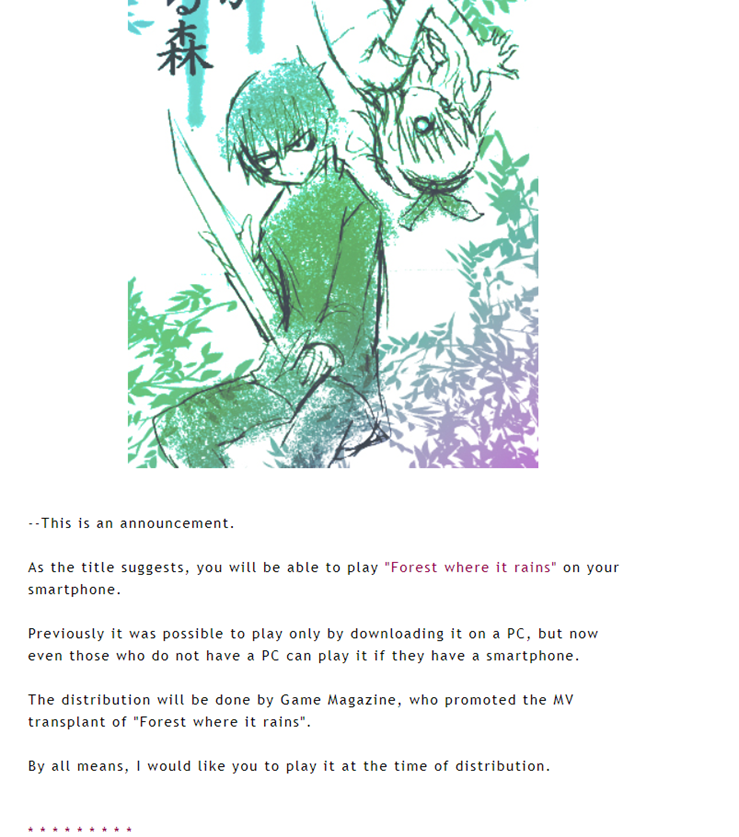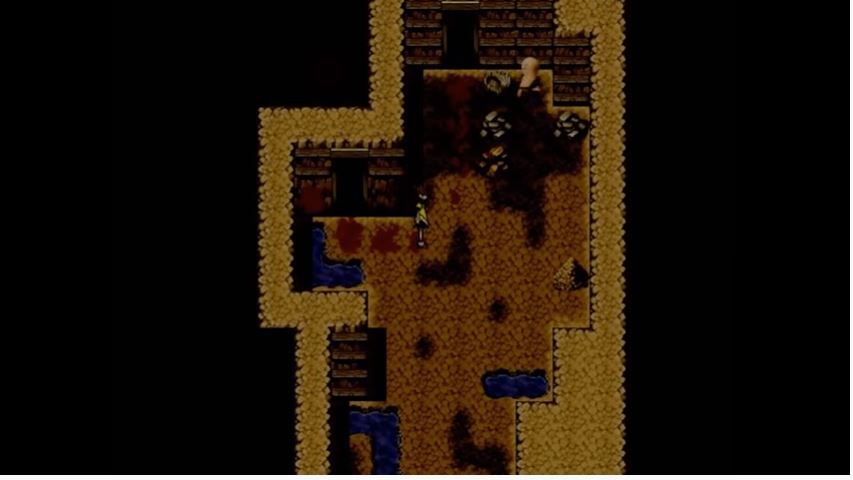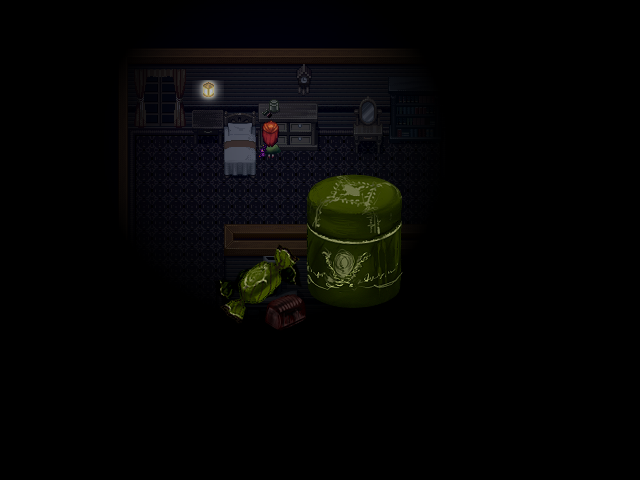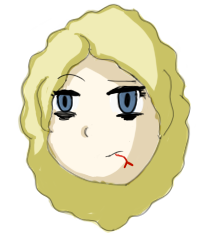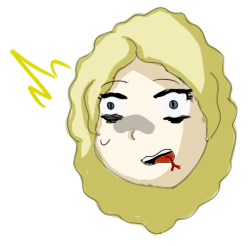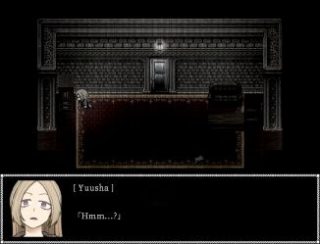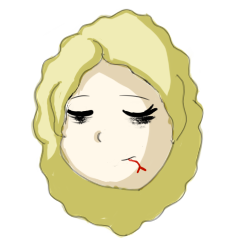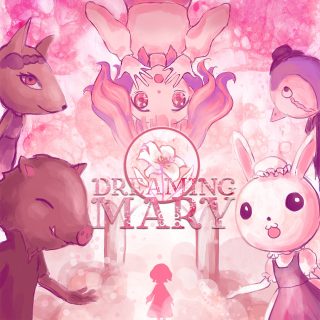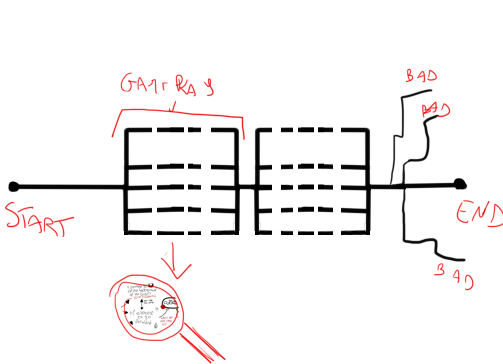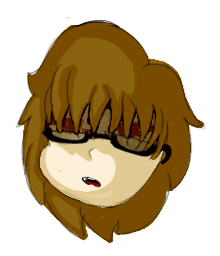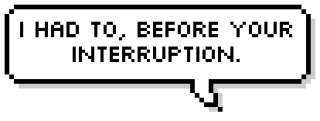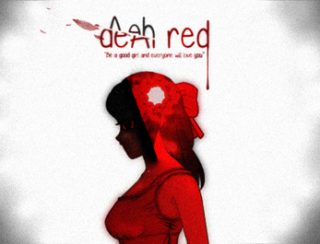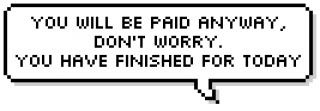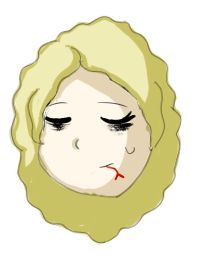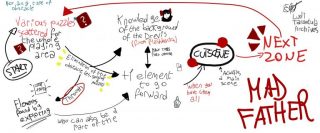Angels Of Death – Severe Acute Laziness Syndrome (SALS AOD-2)
Good morning! Here we are back with the Back To The Future column, EleRantula writing!
As those who follow us know, in this column we retrace step by step, from game to game, the history of the current Horror RPG (abbreviated to HOR-RPG many times) …
This will be the last article. For us, the Storytelling Focus Generation ends here. There will be many questions from you, including:
“But there are and there will be many other games that will make Horror RPG history, you can’t stop at 2016! For example, there is Omori who- “
 “ That will be discussed in due course… ”
“ That will be discussed in due course… ”
(On the Tin Coffee Pot Time, where you’ll see these cute little faces!)
All this paraphrase is to say that the time machine of Back To The Future stops at Angels of Death because, even if you surely say no, many (if not all) other games today take inspiration from this title.
So, whether it’s for marketing methods or from the point of view of the actual development of the game… Angels Of Death was a blueprint.
The one from which many now take inspiration and that even authors treated here in Back To The Future use to rejuvenate themselves.
What, however, we consider a “virus” (citing, even improperly, the pandemic in progress) for this current.
Let’s use the time machine for the last time: due to all our travels it got a bit bruised, but this is the last effort it will have to make to take us to …
2015.
Product History
Yes, to 2015.

“But Google says 2016!”
As if we were to trust the Steam releases as the beginning of the entire Product History …
If you search any Wikipedia, you can find this information:

And therefore from this we can draw only one conclusion, which we also found in the case of Cloé’s Requiem …

Guys, we have to resign ourselves: the era of the “game published individually by an independent lil’author that then became popular because of its value!” is OVER and also by quite a piece.
Let’s see for a moment what the … “Denfa Minico Game Magazine” is.
Or maybe we should say “Den Fami Nico Game Magazine”!


(The page this screenshot comes from was created to advertise the manga about the game in 2017, but it takes you back to the original Den Fami Nico Game Magazine page, where it appears to have been advertised for the first time, even before release. of the multilingual version on Steam)
Ok, so Den Fami is an indie game distribution site…

As you can see, it also initially released games that are now leading the way in the current “Indie-RPGMAKER-Horror” in Japan, including The Case Book Of Arne and Noel And The Mortal Fate…

But let’s see who works on this… Magazine.

The company appears to be called Vaka . Let’s see their “About Us” page.





That’s how mafia indie game developing works.
So, back to how Angels Of Death started…
Yes, even in this case it went forward because of contacts.
This method is not new to Sanada , we learned from The Forest Of Drizzling Rain case that he was acquainted with those in the manga field.
But above all, this way of working is not even new to the creative field in general. Contacts are the basis of everything , you have to meet people, get involved, make affiliations… In short, a big mess if you ask what I think.
So, certainly for the Japanese public, the sponsorship of this game, initially released as free (you can still download an old Japanese version in fact) has existed since 2015 …

And from this all my prelude derived, which was also meant to confirm what we mentioned in the article on Cloé’s Requiem and which we will deepen later …
But as we all know Angels Of Death was known around the world in 2016 via Steam.

And here the interesting things to say about the game’s development history are over.
Really, it’s almost boring how much this game has gone on normally.

Positive reviews …

Negative … (Yes, I filtered the negative reviews because there are only 193 compared to the positive ones, more than 2000)
But, in general, its release did not cause much sensation in the public : it was a normal game that for was popular for some time and it was liked by many.
At least, in the West …
As far as I know, in our slice of the world we barely had the Collector’s Edition of the Switch version of the game, complete with action figures.
But in Japan… Oh mom, in Japan.
Here we are dealing with a COLOSSUS.
And you know that when I mention the reception in the outside world, if I don’t take interesting comments from videos or reviews I quote all the accolades that the game has had, to give you the slightest idea of its spread.
Today I will make this list in a much more excited way first of all because it is the last time …
But above all because it is the most incredible and sensational case to date.

MANGA! 12 VOLUMES !!

MANGA PREQUEL! 4 VOLUMES !!

COLLECTION OF PARODIC STRIPS !! (in the genre of “My Hero Academia: Smash !!” or “One Piece PARTY”) 5 VOLUMES !!

NOVEL !! 3 VOLUMES !!
(With the second volume that has the same subtitle as the second Deadly Premonition …?)

These … Two more things here … So NOT ONE, BUT TWO ARTBOOKS !!
(Even if one is a Fan Book… I don’t quite understand how it works…)
And at the end…

AN ANIMEEE!
We are at the highest points right now!!
Do you think it’s over with the anime ?! Did you think AoD hasn’t grown even more ?!
But of course not! The anime has brought all the benefits of having an animated series from an established studio in Japan …





(In the photo the voice actress Haruka Chisuga and the voice actor Nobuhiko Okamoto, voice actors of Ray and Zack in the anime)

And I didn’t count the merchandise shops!

So guys, after discovering this whole empire that created what was not a very virtuous indie game (as we saw with Pocket Mirror) with too many contacts to support it … It seems almost strange to me to talk about THIS GAME on a column in which it was written about that little fish that was Cloé’s Requiem, about Mad Father and The Witch’s House which after the release on Switch remained in a very long stalemate at the level of fandom.
This is the longest list of… Acknowledgments? Let’s call them this, that I’ve ever done in this whole column.
I should, generally, pass the ball to my sister asking you how, in your opinion, Angels Of Death became such a large commercial giant so malleable by large corporations … But, since it is the last article, I would like to conclude sort of the last time you’ll ever see this section of Back To The Future.
“Product History” in these… How many, two years? Went through ups and downs.
This I would consider one of the downs, actually. Really, before the development of the game … There was, honestly, nothing. Or rather, nothing that I can find or that I consider interesting. It started as a project after The Forest Of Drizzling Rain, Sanada had contact with Vaka who thought about the distribution… And it ends here. I have not found anything that would make me theorize like in the case of Cloé’s Requiem, nor a mixed reception like Mogeko Castle or even some kind of track from years and years before the game was released, like in the cases of Pocket Mirror or Corpse Party.
Yes, the Product History section has often been short and I bet anyone who reads these articles may have skipped it many times.
In the introduction to the Back To The Future column we say, about this section:
Sometimes it could include research and analysis of the history of the work from its creation to distribution, but in most cases it will be analyzed (often for lack of data) the impact it has had on the public – large public – and in what context it was launched. We speak of “general public” when we mean all those types of spectators or players who have nothing to do with the RPG Maker community, who often don’t even know what this tool is. The audience therefore becomes for us a yardstick for measuring the impact of the work in the “outside world”, analyzing what types of fandoms were born from the titles that have become an icon of the current, then in some cases become real media phenomena .
And in general we always ask ourselves this question:
Is the RPG Maker universe really relegated to being an amateur phenomenon? Or could we invest in a new market?
To answer we cannot just relegate ourselves to analyzing the strengths and weaknesses of the game and / or analyzing it internally together with what we call the “Author-Work Relationship”, that is how they treat their work.
To find out if you can invest in new markets, if you can go further from the indie RPG Maker, as Undertale did in the case of Game Maker … We need to know the whole context behind it ; the beginning, development and conclusion of the history of development of what we will then analyze. It’s useful to understand in which situation the people who “did it” to do something complete , or it serves to understand why “certain titles did not have the success they deserved” without necessarily giving blame it on the “strong corporations who only want their things” or the “idiot sheepish crowd who gulps down only cheap or commercial products”: we have seen in the case of Mogeko Castle that, even if it was really a valid title for a great commercialization (at the same level of Angels Of Death, I bet it!) … Nothing has ever been done, because in my research I have not noticed a really large or intense distribution of the game.
Because to analyze a phenomenon you must first spend hours and hours on the PC on various Wiki, Japanese Wikipedia with a translator, official sites, forums, Japanese indie game distribution sites (until I have written in this column I had no idea of sites like freegame.mugen and Freem!, even though some people might have known them for years) …
Descend further and further down the rabbit hole until you say “okay, I think that’s enough information to write!” even if you know that you will never have absolute knowledge , you know that you have certainly missed a detail or two because you were not there to analyze the phenomenon while it was happening and you arrived late or even just because of linguistic or cultural barriers…
But these searches, in the end, must always be enough to construct a discourse . To know why the hell “this game went like this” in the market or even why “this game IS like this”, because you will surely know that many times the substance of a game derives strongly from the context in which it was made , to give a basis on which everything written in the other sections of the articles in this column can be founded.
In my opinion it is the most tiring of Back To The Future, not to brag or play the victim (Ele wrote all the paragraphs on Product History), because there is a lot of research to be done and information to filter, know which ones are still valid, interesting, useless, evaluate what is worth talking about and make a case study interesting and what is actually normal to do, know if any sources are still reliable and / or how to do it one can construct a discourse on all the researches made.
But I’ve never regretted researching. I discovered a lot of scoop writing for Back To The Future, delving into this current as much as I can through all these “development histories “. They made me learn a lot about how a market can work (and you will hear some good ones in the next sections, I tell you!), How you can sponsor yourself, how far you can go and many other things that I will surely treasure during the work that the Ludi Tarantula team is doing for his game, which we have mentioned a few times here in the Archives.
I still don’t say goodbye to you , because I will certainly be in the next sections of this other great article that will mark the end of the Back To The Future column and possibly the end of the Ludi Tarantula Archives together with what will be the article on the “Selfish Confort Dilemma” …
But in any case, as when the day comes to an end in the streets and the first shops start closing, the Product Story of the most influential Horror RPGs ends here, with one of those games that has managed to rise to the upper floors that we have. never known here in the Indie game field.
At this point, let’s explain why corporations have been able to give Angels Of Death so much space!

Let’s face it right away …
It is because it is the RPG Horror that comes closest to the anime product. Really, even those who liked it think so!

![]()
We’ll talk about why later in this paragraph, but let’s think about this very thing. Why has an anime-like product become so popular?
The reason is more trivial than you think . We had already discussed it when in the reviews column we talked about Midnight Train and we will bring this out to the last part of this article …
Unfortunately, from what we have noticed, above all the current of Horror RPGs is mainly followed by passive spectators , despite being videogames.
(…)
So we started to evaluate Horror RPGs as if they were just their stories, as if they were for example an anime or similar.
The Angels Of Death phenomenon is a direct consequence of this, simply . As we said in that article, this “passive-invasion” (yes, I take inspiration from the British invasion of the 60 ‘) or the invasion by passive spectators of the videogame world has led to the exaltation of types of products that have great passive works as masters !
So Angels Of Death was able to take a very large slice of the public … In fact, to PLAY Angels Of Death you don’t even have to be a player anymore! So much so, it’s a B-rated shonen / seinen done on RPG Maker, in the end!
And that was a good trigger to make it what it is today.
But what actually made it a bit more edgy anime and done on a video game engine?
We will divide this answer into two points, as we did for the Mogeko Castle’s narrative registers.
-The characters
If not the plot (even it is fully marketable too), many say that the strong point of Angels Of Death are the characters.



![]()

From a personal point of view, I can tell you that they are, from first to last, stereotyped and also very annoying … But this is actually the point.
They are weird. They are crazy killers, but since they are put down in a certain way they are glamorous.

Let’s talk about this guy, for example.
Zack or Isaac Foster. Even before entering the … Building of the Angels? (It doesn’t exactly have a name, I made up something on the spot) he He’s always been a killer because of a troubled past, which also brought all those bandages on his body.

(From V For Vendetta by James McTeigue, 2006)
Yeah, the reason why Zack has those bandages is this, right?
So we, as sane people, take it for granted that a killer is someone the game is supposed to “distance” from us , someone we can’t sympathize with or, in any case, would have the role of an antihero or similar characters.
Just a little parenthesis …
I appreciate how he is almost more of an idiot in the game, compared to the manga and the anime.


(Some of his quotes genuinely make me laugh, I admit)
While it doesn’t make too much sense with his killer nature at the moment, this contrast could have created a good character in my opinion: example, the anti-hero role I mentioned earlier.
But speaking of practically all the serious scenes of the game and all the adaptations of this title…
What is emphasized about Zack?


Literally a “bad boy” with a heart of gold who has the questionable hobby of killing people and generally being a PSYCHOPATH, impulsive and problematic!
…But these last three traits are only brought up when the narrative requires it.


Otherwise, Zack doesn’t seem to have any “disagreeable” or unjustified traits.

So his calling himself a “monster” does not become a demonstration of self-awareness for which, however, Zack refuses to improve himself … But simply the tropos that the abusive educator brainwashes the child who then brings these ideas about himself as an adult .



And in this scene, totally contradicting the psychopath that he is, Zack feels some kind of empathy towards Ray. In fact the distorted view that Ray has of him as “God” sickens him.
Okay, but why does he care at all?
IN THEORY Ray is no longer useful for his purpose, Zack should just … Leave her there. I don’t want to be evil or anything, just trying to get in the mind of someone who should be insensible to these things, given the fact that he is a serial killer, so something similiar to a full-on psychopath.
Well, that’s in theory.
But Angels Of Death in its characters needed these elements:
-A design that is… Flashy, to say the least.

-Something that can at least resemble ambiguity …

In the case of Zack a crazy side, which makes him “sparkling”…

But he is still able to feel empathy.
-But, in cases like Zack’s (and, in the manga and anime, Eddie) a dramatic and exciting story to accompany him, so that we can understand him (in our opinion) at 360 °. This topic will be explored in the article on the “Selfish Confort Dilemma”


-Instead for many other characters, attitudes so extreme that they always keep the audience awake.

Cathy is one of the most “trashy” and extreme characters in the game: she has one of the most dramatic and longest chapters and her personality is literally “HAHA! Torture to whom I consider scum is so great! ” I mean… Um, no one knows exactly what kind of people she refers to exactly, but shortly you don’t have to get on Cathy’s nerves.
In fact, she is another of the most popular characters.
I tell you, it is not even a bad thing to deal with or even just create certain characters . Even series like Danganronpa use the aforementioned expedient for many of them to make themselves recognizable.

Nagito Komaeda is one of the more twisted characters in the series, even more than Kokichi Ouma from Danganronpa V3. And guess what? he Is one of my favorites and his sudden actions entertained me during Danganronpa 2 Goodbye Despair.

Genocide Jack (or Genocider Syo) another personality of Toko Fukawa , killer of “cute boys” becomes one of the main twists of the second chapter of the game. she is one of the most iconic characters of the first Danganronpa and is explored further in Ultra Despair Girls.

Angie Yonaga , the girl at the center of the image, revolves around the stereotype of the extreme religious girl, in general. In chapter 3 she becomes the main reason for “movement” and conflict.
So we can conclude that the “personality” of the game is all about the characters and how extreme or even just weird they can be. It makes them objectively more appealing and their being eccentric convinces the viewer of their unpredictability , so that they are more convinced to follow the work just to see how the aforementioned will act. This title has only extended this concept to all characters in the game.
So the characters in Angels Of Death may or may not be written well, but you have to admit what the heck, they work really well.
Another element that many seem to ignore in a game since it is taken for granted, when instead in my opinion it is CRUCIAL to make it marketable …
The direction.
We have already talked about directing with Mad Father and Cloé’s Requiem, and we will talk about it in what will be the latest article in the Ludi Tarantula Archives.
Direction is practically one of the means to mark whether a work is suitable for a large audience or whether it is an authorial product . Directing a marketable product gives the viewer as much as possible in terms of emotions: for example, a sad scene has saad music, whining from many characters (in the most extreme cases or even, in the negative, over-dramatic) … In short, the emotion is exaggerated to communicate it to the viewer at best. This is what a more typical direction of an authorial product, or simply a drier direction does not do.
As a person who has been involved in directing the cutscene for a long time, I tell you that it is very difficult for some (for example myself) to be able to do the first type of direction. You are afraid of falling into the ridiculous, in the simple over-drama, make the scene look fake …

(I took this scene as an example because it is dramatic and flat of pathos thanks to the music)
But my God, I have to learn that DRAMA WORKS!
We already talked about the inspiration from passive works in the case of Mogeko Castle …


And we have already talked about dramatic direction in the case of Mad Father. I still consider it one of the greatest exponents in the Horror RPG field who has managed to do a dramatic direction… Called “cheesy” by many.

Heck, just say you don’t like Mad Father, because Angels Of Death has some pretty good drama spikes too.


While the use of pixel-2D graphics doesn’t do justice to what an anime shot can be, we understand that in terms of directing, Angels Of Death really does its job.

This is also due to the fact that I really like Makoto Sanada’s drawing style, but I liked how the two “Show image” appeared in terms of rhythm…

Like this part where the action scene is over and Cathy is dead: in short, when you exit plan B3. You can feel the whole atmosphere of an “aftermath”, the music makes a lot of atmosphere while you discover the latest info on Cathy and do the last things to go to the next floor.
For this second case, after the excited scene Sanada does not let the music go into fade and / or leaves us in complete silence for these last parts, which for example I would have done a long time ago, when I was learning to direct cutscene, but still accompanies us with music.
From the types of scenes that are created (the so much action that the story gives helps in this, that’s what I mean by “marketable plot”), the various gimmicks and even the music used that, even if we will discover in the Author-Work Relationship a bad enough thing about the Angels Of Death music that will make us drop the magic a bit, they are really spot on and, again, this thing is not easy to accomplish…
It’s all so anime, so positively dramatized to the extreme that the scenes , even by those who didn’t like the game (like me) are always and anyway impossible to ignore and strike a lot in terms of impression, even if the concepts they communicate can be part of a problematic writing.
Everything I am saying will seem very little , or for some it will seem stupid notes … But we have seen with Pocket Mirror and other games with disastrous direction that creating a “classic anime scene” I repeat that is not not at all simple and getting something like music and rhythms right is something to appreciate every time.
So, we talked about what makes Angels Of Death work. I have written relatively little , compared to what will be in the Defects of the Opera … But let’s face reality.
In today’s times, captivating characters and dramatic direction that gives exaggerated emotions are the only two things that matter. We’ll get a better look at this through all the flaws Angels Of Death has but…
In the Archives, many merits of many different games have been written. We have certainly given context to the words we wrote many times: the merits we listed were also given by the common opinion that people had in games …
Now for the puzzles (Ao Oni), now for the suggestiveness (Pocket Mirror), now for the depth of the characters (Cloé’s Requiem – We have dedicated an entire appendix to the characters of Nubarin and Nanashi No Chiyo!).

As the introduction to the Back To The Future column also says, the aim of the Trump Card section was to find out how the game treated itself positioned itself in the Horror RPG timeline , why it was a more iconic, shiny or whatever you like compared to so many other games that are considered minor. In short, how it makes itself recognizable in the boundless sea that is this videogame current.
With Angels Of Death we have reached the end. The only reasons why a game is now appreciated by the public is a direction that works and that gives what it has to give in terms of emotions and captivating, characters that are problematic but at the same time perfect enough so that they can cause various positive effects on various audiences. And this is one of the reasons why the Horror RPG story ends with Angels Of Death for us.
Because if we were to describe their way of building a recognizability line for so many other games today, we would have to list the same two things every time.
But now, with this second category of Back To The Future concluded, let’s go to what we can define …
Thermometer of… Professionalism?
Thermometer of Professionalism
Compared to the other articles, where PaoGun was passing through the points that make up the Thermometer of Professionalism, for this last article … You will spend even more time with me!
…Of course, that’s not a good thing at all.
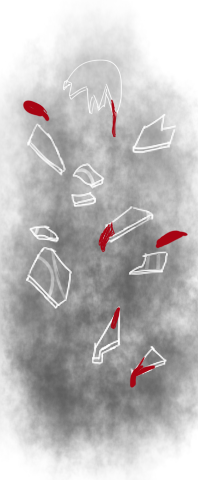
Here, we are already starting very well with a nice black smoke instead of the usual Thermometer…
As you can see, over the course of the last few articles it has taken quite a few hits, up to this point.

Very well…
As in the article on Cloé’s Requiem, the sections will have a different order.
You know that we usually follow this order: Packaging -> Author / Work Relationship -> Defects of the Work.
Again for the sake of convenience, even today we will overturn these rules.
There will be the Defects of the Work , then the Packaging will come and then, in the end, the Author-Work Relationship …
Thinking about it, this increasing importance of the Author-Work Relationship compared to the Defects of the game itself really makes us think about how much, in today’s market, an interesting story or even the personality of an author behind a product matters more, than judging the work itself.
But we will talk about this in the Packaging and in the Author-Work Relationship, all together.
For now, after saying why Angels Of Death works …
Let’s say the things that actually as a product, although it suits us in the market, does not make it a complete videogame “blockbuster” , because they impact on the overall quality of the game.
Defects of the Work
Yes, I’m still in this section too! I really don’t want to get out of the way, huh?
We will also go through the flaws of Angels Of Death together, so …
Let’s say right away that I’ll be objective: I don’t like A LOT of things about this game , but I will also objectively comment on those that, although I find them very annoying, are considered minor defects , such as the last one we will talk about. These types of defects have little impact on the overall gaming experience and only if you go to re-play, analyze or even just re-watch the title a second time, can they be seen.
But Angels Of Death also suffers from two problems which in our opinion, both members of the Ludi Tarantula Team, have a huge impact when playing even for the first time.
Let’s get rid of the most painful problem now.
You know, illogicality (which we will talk about at the end of the Defects Of The Work) is not the worst thing that can happen to this game.
This is actually a big flaw my sister noticed , but I agree with her that it’s the biggest sin and mistake of the whole game, along with the gameplay (more on that later) .
Unjustified changes in tone.
From floor B6 to floor B3 we have a rather linear tone. The captivating storyline that we have described above, with the direction we have described above. All okay, a fairly edgy dark work, but also enjoyable, I admit.
From the B2 floor, I don’t know what the hell Sanada was thinking, a long phase starts…

Very long…
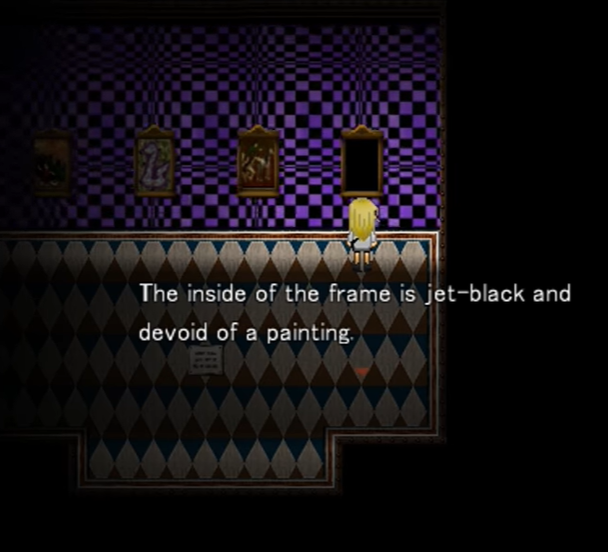
VERY VERY LONG…

“OH MY GOD, WHEN THIS WILL END” KIND OF LONG…

PHASE OF HALLUCINOGENS AND MENTAL BLOWJOBS ON GOD WHEN THE ONLY THING WE HAD TO DO WAS FIND A DEVIL OF MEDICINE FOR A CHRISTIAN (We thought we’d make this joke because in the Pugliese italian dialect people are called “cristiani” so “Christians”), WE CAN TRULY SAY IT, THAT IS BLEEDING TO DEATH!
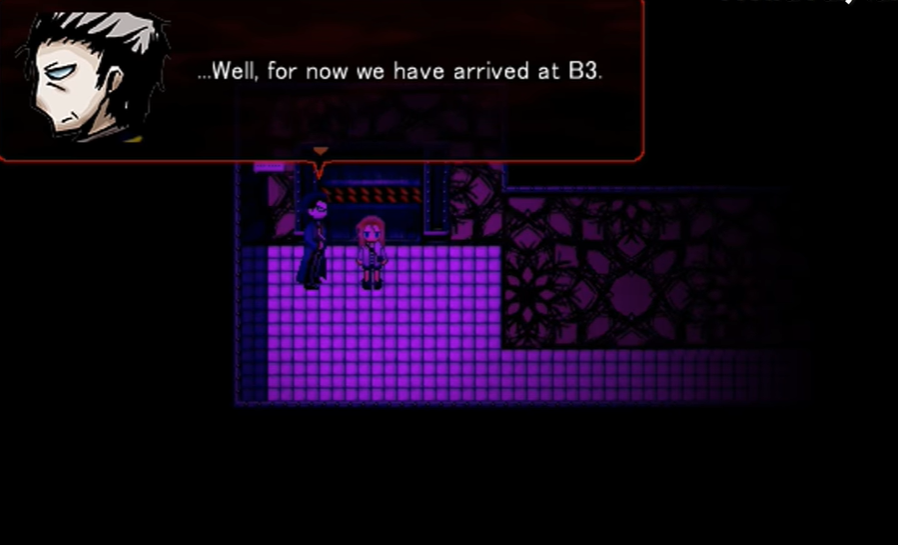
Really, these phases serve NOTHING for development of the plot , the medicines (since from the beginning of the game we have Zack who knows that this is an assassin structure) could be taken right away when we were still on floor B5: you know, just to be careful!
So, in addition to the total uselessness of these phases, which only exist to offer a minimum of puzzles and “gameplay” that we didn’t have FOR THE ENTIRE GAME (but we’ll talk about it later) …


No…


No, no, no…




Why… It… It doesn’t make any sense…
(Notice how Gray at this point, before the next screenshot scene, VICTIMIZE those who are actually murderers for blaming Ray without any heck of a sense. Should that be something that makes this work controversial? Provocative? When in reality it just sends a disgusting message to those who are multiple killers because the narrative … To be brief, it sucks at sending a controversial message that should be the one of the whole game. But back to us, if I continue it will get nighttime before I even expect it.)

Sanada, I thought you grew up from this…

Exactly! A total change of tones that makes the part of the game dedicated to the B2 floor unnecessarily abstract in a sinister attempt to try miserably to make this work profound, intelligent or in general that wants to deal with big themes!
Hell, we went from cutting off a woman’s hand with nonchalance and indeed, this action is even glorified and / or made “cool” and action …
To a courtroom scenario? With the JUDGMENT OF GOD ?!
Seriously? The whole game up to B2 was a GLORIFICATION of breaking one of the 10 Commandments of the Moses tablets: Thou shalt not kill. We said it: the characters of the assassins have been made beautiful, glamorous and captivating with the mad scientist with the story of the double eye: ooh interesting! The gravedigger child who is in love with Ray even though he wants to kill her: what a beautiful contrast between childhood love and wanting to kill! Wow, duality between something childish and something serious and IMMORAL! Cathy treats torture as something to be spectacular! Wow, so sick!
(Monokuma had been doing it since 2012, but I’ll leave this out …)
Zack himself … Basically a “killer with reasons” with which we should LIKE him because dear spectator, you too want to kill anyone you think is of deplorable morals …
Now YOU Sanada , who have kept the game going in total action edgy, have made assassins beautiful in our eyes , making us assume that Angels Of Death is one of those over-the-top works that sometimes simply ignores even those that are the common morals when one is from the point of view of sick people (or in any case not so stable folks) …

Example: In Danganronpa V3 Killing Harmony, an incestuous relationship is involved between Korekiyo Shinguuji and his sister. This is wrong and Korekiyo is always seen (even before and especially in this moment) as a creepy person.
You distort us ALL THE VISION WE MUST HAVE OF THE WORK, to make a nice speech about the will of God, about “our will”, about what is right, what is wrong …?
But wait, to give us these kinds of complicated and real beautiful speeches, or even just make us think about these …



Isn’t the job of works that start out as COMPLICATED already?
Hell no, Angels Of Death! Commercial “trash” (with “trash” I mean something more “light”, I don’t know if I explained myself) you were born and commercial trash you stay! That’s not how the tones of a narrative work are made!
What the hell is now, at the last moment, this pseudo-ambiguous symbology (but which actually has little or no meaning) of the killers as “angels of death” and which therefore need to be justified?
Was Kira also an angel of death then, Sanada? Is this the vision that the game wants to provide on those who commit damn GENOCIDES?
Damn! Light Yagami existed to be opposed by L! Light Yagami represented man’s temptation to have power over the life of others and how man can be CORRUPTED by it …
Death Note on this topic creates a whole speech, from the first to the last episode !
There are constant symbologies to the church, to God… But that’s okay there.
Because the entire opening and concept of the work starts from an interesting human paradox and that paradox is studied, even without giving any answer … Because there is no universally accepted certain answer to these issues, at least not totally.
Really Sanada, what the hell is this your habit of putting big themes into pure entertainment plots? In the Trump Card I have been really tame, your characters work well, I have understood the mechanism (if I didn’t make that seen enough, I’m a Danganronpa fan, so I’m also used to these “extreme” characters) …
But these changes in tone are not justified with a “hmm, you’re too critical”. They also bothered me a lot the first time I played Angels Of Death. What did you expect? That I would not have been there skipping the dialogues throughout the philosophizing of Gray and the other characters about who God is, what God wants, the impure, the pure …
I didn’t open the game for this! I didn’t come here for this!
So, heck, how should I take Angels Of Death?
I’ll never know! Because on the one hand we have the first 3 floors that show us that it is an over the top, sparkling, action-packed work …
On the other hand, we have the last two which are full of mental jerking on major themes…
So: Angels Of Death is deep or not?
(Uhm, yes, I would say no to you because the “big themes” are limited to kilos and kilos of useless dialogues from the characters and no serious discussion, because the game always has the “trash” frame of the first three plans, which makes this title unsuitable for dealing with the big issues … But well, I leave the question open!)
And as if that weren’t enough … There is also the gameplay to discuss. Yes, even that is not safe from my perennial wrath.


![]()

… Although many other people have had the same feelings that I have.
In other games we have seen the gameplay was done well, with communication problems (Akemi Tan, Ao Oni), very forced and fallacious (as we have seen here on the Ludi Tarantula Archives in the very old review of “A Figment Of Discord”) or a lot standard to have nothing to say about it.
… The gameplay in Angels Of Death is not there.
The experience is practically this: after a long cutscene, FIVE STEPS are counted … And another one immediately starts!
Look, without further ado, ssince we’re talking about gameplay let’s compare Angels Of Death with another gameplay we’ve analyzed:

We have seen with Mad Father that the way in which you get to the main scenes works really well: always provides obstacles consistent with the plot and / or the context in which we are, together with an integration of the exploration of the immense mansion of the Drevis through which we find the means to move forward. This creates a huge phase in which the player is free to practically do whatever they please, even though they know that the goal is to move forward in the story by eliminating the obstacle (which can be a puzzle, or even just something that doesn’t keep us going in general as a spirit). Although, in any case, the player does not feel that they are lost in a “gameplay phase” totally detached from the story, because the phases in which you play are connected in a very strong way with what, if not, would have been a very long and boring cutscene.
This keeps the player active, this makes them sense that they exist because they are doing their job: helping Aya to counter the effects of the curse. It is literally what a game has to do and the main reason why you play a video game and not watch a passive work! The player’s interaction with the game world, the IMMERSION also given by “feeling like a protagonist”!
“The plot has to go on somehow”
But can it really be done only and only with stupid cutscenes?
Mad Father tells us no, despite being as story-driven as Angels Of Death.
But even if you don’t want to do a gameplay like Mad Father’s…
I can really give you a lot of examples of how you could keep the player awake, even if a story was being told, but I’ll just mention one.

This is the opening scene of “What Remains Of Edith Finch”, winner of a 2018 Best Fiction Award at the British Academy Games Awards.
In fact, the game focuses on a rather busy narrative and as far as I can understand (as a game, mea culpa, I still have to play it!) there do not seem to be more “free roaming” moments where the player is totally alone. The game itself was considered a walking simulator.
But even just looking at this opening scene, I can understand that someone capable worked on this title. It was all about the art department and the suggestion, making the player walk in an environment that, even if it is known to Edith, is new to the player.
I know very well that this scene, compared to those shown in Angels Of Death, should be an initial, very evocative, presentation scene. But I particularly care about one element …
The game with the girl’s narration slowly presenting the context in which the story will then move, lets the player interact with the environment from almost every point of view. As players we know that there is a linear path that we can follow, but in any case we can look around, go back… And the game doesn’t stop us from doing it.
The narrative is driven BY THE PLAYER. The game waits for the player to move forward, lets them go for their own time. In the end, it is the player who has to lead Edith, what’s the point of blocking them?
We can conclude from this that in well-done titles you don’t put rockets on your back because without cutscenes or massive scenes in general, the atmosphere is lost.
The person who lives the experience is not tossed left and right by the game because “the plot must go on” , it is not pulled away because the characters have to do everything. In good titles, the game trusts you, because in the end YOU have to lead the protagonist.
And a well made title does that.
And this gives the experience a beautiful effect: you always have a certain type of control over what you are doing, you always have the brain active, even if you immerse yourself completely in the game and in its narration (for story-driven titles). I consider this the beauty of video games and that, as a game developer, I tell you that it is very difficult to do: if you do not find the lazy expedient of the “phase with the puzzles” you must have a monstrous ability to integrate everything without letting the player go too out of the way but at the same time don’t make them feel constrained.
And I got all these nice words out of what is considered a walking simulator. Then, automatically, a very simple gameplay. But a gameplay is there and you can feel it from the point of view of the immersion.
So does it still seems acceptable that a narrative can only go on in cutscenes and that the only reason for you to walk around a bit is to solve some puzzles or even just give you those five minutes to save, because after five steps the narration still goes on?
Because really, I don’t consider this to be driving players, but dragging zombies!

“Employee #427’s job was simple: he sat at his desk in Room 427 and he pushed buttons on a keyboard. Orders came to him through a monitor on his desk telling him what buttons to push, how long to push them, and in what order.
Although others may have considered it soul rending, Stanley relished every moment that the orders came in, as though he had been made exactly for this job. And Stanley was happy.”
-Introduction to The Stanley Parable, 2013 game developed by Galactic Cafe
Really, every time I play Angels Of Death I feel exactly like that.
Am I exaggerating? I don’t think so.
But why is this a problem?
I already made this speech during the review of Midnight Train, a minor title by author Lydia.
Let’s start by saying that the various difficulties to be overcome in the game are not directly connected in a certain way to the plot … But they seem a mere outline!
There is a reason for this, though.
Unfortunately, from what we have noticed, above all the current of Horror RPGs is mainly followed by passive spectators, even if they are video games.
Thanks to the youtubers, mainly, they were able to approach these fan titles, for example, of anime, TV series, movies, etc., because even if the videos were about video games … The spectators were passive always and in any case, since someone was playing other.
So we started to evaluate Horror RPGs as if they were just their stories, as if they were for example an anime (eh, how many times have we seen attempts to make Ib cutscenes animated, for example?) or similar , but this is also thanks to a gameplay that in many cases (including two of the “masters” Ib and Mad Father) was closely linked to the story and the environments, therefore indivisible from it, and also an integral part of the atmosphere.
This “gaming devaluation” of RPG Horror, this almost lowering it only to “a good story” and that’s it has led to this: people who have never been gamers who “pretend” to make products for gamers.
But the problem here is even bigger.
Lydia was an independent author who, alone, gave birth to the deformed baby that is Midnight Train. But, in fact, Lydia was a victim of the devaluation of RPG Horror in general and, in unconsciousness , gave birth to a really lazy gameplay.
But, in fact, she did it unconsciously.
Angels Of Death had professionals behind its publicity, so I assume it was overseen by a sizable team of people even during its development: resources were not limited at all and knowledge of the market and / or knowledge of how to behave when developing a video game was not limited. The people behind Angels Of Death were perfectly aware of everything they were doing , but whoever took care of the game didn’t care about … Making it a video game.
And this is one of the reasons for the title of the article, why “laziness” was brought out. Those who want to establish themselves as professionals are literally saying, while developing a VIDEO GAME that it is not important to play!
So, in short, they disrespect the video game in favor of a passive work, such as an anime.
So, even more briefly, (I dare to say it) they have given the shit out of the media and used the video game not as the primary way to tell their story, but only as a stupid means of getting to what they really wanted: an animated series!
And do you know the problem?
This mentality is not limited only to this title.
… But we will see this in the author-work relationship.
Before moving on to that, let’s talk about the last problem.
Writing.
Let’s face it, anyone could tell us that the writing of Angels Of Death is incomplete, problematic and is based for many elements on insights given by the manga or in general derivative works.
Really, Eddie was really foolishly defeated in the game but the writer wanted an excuse to show his face … So it shows in the anime and manga.
But… Yes, from the fact that we put this point in the end you will understand that this is not the worst , although I will be very, VERY angry also on this point.
Since we have to speak for indicative examples, we will explain this… Not excellent writing (which is actually found in multiple parts of the game) with one of the more serious examples.
So through the link between this…

And this.

I … I don’t even need to explain it to you. Just looking at these two screenshots you can see this gigantic plot hole.
“It is said that Ray has been lying all this time!”
Well no! It wasn’t Ray who told Zack that she is a sacrifice and even if it was, we are explicitly told that RAY IS A SACRIFICE. There are not even any clues , any elements that could lead us on the way to which Ray is not a normal sacrifice in the … Construction, but a owner of a floor!

No, we are told for the whole game that she is a sacrifice and she is treated by EVERYONE as a sacrifice! I challenge you to play Angels Of Death again and find a minimum element before plan B2 that can in the least lead you back to an origin of Ray as the owner of a floor!
“What if it was all concocted to make us believe she was a sacrifice too? What if Ray had “made an agreement” with the whole system to have her treated as a sacrifice? “
My answer remains the same: there is no indication that she is a master of the floor … EVEN WHEN SHE IS ALONE. Why should she pretend when she is alone ?! Why isn’t there any kind of foreshadowing either? At least to show that Ray’s is not a normal case, it’s an anomalous case, something!
I don’t care if these things are “explained in the manga”, “explained in the prequel”, explained who knows where. A PLOT HOLE remains in the game , the largest in the entire title, which already does not boast excellent writing, as we said before.
Packaging

Okay, we have a menu that I personally don’t like.
But it must be said that a logo of THAT DIMENSIONS and simple “New Game” “Load Game” “Exit”, with a bloodstain that immediately immerse us in the “edgyness” of the whole game immediately give the brand idea , which we must become attached to , because we must BUY , the games that have that logo!
Okay, hysterical delusions aside, we’ve talked too much about such a meager menu.
Let’s move on to the UI!


Okay… It was held the same since The Forest Of Drizzling Rain, but this time you can’t see the map behind…
I thought the move to more established teams and publishers would make the game upgrade from this point of view as well …
You know, for a game played by professionals at least I expect more, right …?
Instead, they wanted to keep it simple , with only the half-body of Ray dominating the screen, to compensate for the once again sparse menus.
Come on guys, Angels Of Death is a professional game… Let’s see the maps!
Those, even if not much mentioned by my sister in this paragraph, are also part of the packaging because they have a very important role in the style of the entire title that is then played, it is precisely where the player will move, where the scenes happen, literally what makes up the scenography of the events-




Um… I mean…
Photography and certain sporadic scene elements, such as the reflections of the windows and the moon in the maps of the last few episodes certainly dampen the effect …
But if we take the photography away, we get this:


And… And my reaction always remains this one…!

“12 euros? 25,000 lire for this shit here? But it’s madness! ”
“Madness? Don’t you know this map is from Makoto Sanada? One of the greatest living developers in the current Horror RPG? ”
“What developer is that, my map designer with 5,000 lire does it better!”
(Values appropriately changed to suit the situation … Because 30,000 lire is little more than the price of the game.)
-Three Men and A Leg (Tre Uomini E Una Gamba), 1997, Aldo Baglio, Giacomo Poretti, Giovanni Storti, Massimo Venier.
And in fact, I can show you that games that have had half the visibility, success, MONEY AND PEOPLE that Angels of Death has had and earned demonstrate much more commitment to dealing with game scenarios!


Accha, as madlad that she is, totally changed the perspective of RPG Maker: because she DID NOT LIKE it, she wanted the side scrolling game because it looked good, and she did! In fact the maps are beautiful!
Now, moving on to another title, let us see some maps of The Witch’s House without lighting, please!


The Witch’s House, even in its first version, has some beautiful maps: even in this game some of them can’t stand comparison with many titles today, but I see a certain taste in the general composition of these environments …
Or at least DECENT window tilesets!


(What are these drawn with? Paint ?!)


Hell, do we want to talk about Sen?
Dudley and The Mysterious Tower was not successful, let’s also say it was a colossal flop… But in the maps it immediately put down a clear style, with well customized and stylish tilesets, as well as sprites.
And the Mad Father remake?
… And at this point we also count that of The Witch’s House, since they did the same thing.
Sen and Fummy heard that the maps of the free versions of their games WERE NOT SUITABLE FOR A COMMERCIAL GAME, so they made a commitment (perhaps along with others; I sincerely hope they were helped) Presentable on the Nintendo Switch and Steam the game, with graphic upgrades that don’t joke!
Do you see? In the case of Sen … He could leave Mad Father as he was, he could distribute it for 10 euros on Nintendo Switch like this, regardless of the appearance of the maps (to say, The Crooked Man was put on Steam for a fee with all the old resources used by Uri …). But Sen is a good developer (really, we renew our esteem for him, even with all the weird things he added to the Mad Father storyline …) and he THINKED about how the environments are presented and the impact that these have on the player. Because Sen cared about the project and the fact that he wanted to improve the experience for those who paid for the game … In my opinion it shows that he respects us.
Makoto Sanada instead , compared also to his namesake Kedouin (whom we also mention because he too accepted a way to modernize his very dignified game, for what could have been a more modern Corpse Party), he didn’t care about his project . And he didn’t care about us and our money either.
But let’s see these thorny relationships now, In the Author-Work Relationship… And above all why this is so.
So let’s get ready for one of the biggest provocations we’re going to do here … Which has to do, again, directly with KADOKAWA, Enterbrain and all these beautiful names.
Author-Work Relationship
Then…
We finished the packaging paragraph with a not bad accusation.
“Makoto Sanada didn’t care about his project and he didn’t care about us either.”
Do you think I summed up the Author-Work Relationship that concerns this latest game of the current Horror RPG as we know it, right?
Not really. In this section, compared to all the other articles, we will not talk about “an author”, through interviews or anything like that.

Really, the one interesting interview with Makoto Sanada only made me feel an absurd amount of cringe when it was said that his cutscene direction comes “from theater” and not from the more classic anime mixed with classic RPG Horror directing, just for a damn black screen scene where only the two characters are seen…
And then, in general, all the things he said were so generic that if I were to base this section on this interview I would spend a few lines on it, then I would go directly to lunch break.
Heck, we only know about him in particular that he graduated in theater (and this seems to give him the right to say that his cutscenes are attributable to the theater… Okay…?). For the rest, always the same things.
“I used to play since I was a child”
“I discovered free games thanks to Ao Oni”
“I’ve always liked making stories, I used to do it since elementary school”
Boooring…
In any case, there does not seem to be any “relationship” between Author and Work for Angels Of Death. We have already seen it also for The Forest Of Drizzling Rain.
So … Today we don’t care how the author approaches his work.
In this case, the author is cold , irrelevant and with generic statements about it.
I don’t feel any attachment between him and his works. And this is neither good nor bad . It’s just very strange for an indie title, where we all feel like we are “putting ourselves completely” into what we create.
Sanada’s seems to me, however, how someone from a larger company would behave.
Ah, the big companies. Every indie developer wants to make an affiliation with someone who can export their work to a huge audience.
In the movies we see the “company” or even just any person who has to do with marketing as someone / something big and bad, who just wants to make dirty money through the work of “young artists”, which they exploit with inhuman conditions and abuses …

(The first example that came to mind is Uncle Ian from the Alvin and the Chipmunks series, when the Chipmunks become famous and when he wants to make the Chipettes successful he shows every time, as a good caricatured villain, his avarice and attachment to success through exploitation)
We always see them as tyrants, of which we always understand every bad step but which we cannot beat, because they are “too strong”.
But after doing this nice little speech …
I say that in reality we have neither done nor will do a good job of giving the message not to completely demonize the figures related to marketing.

(Cloè’s Requiem PT2 “Six Characters In Search Of An Author)
But in any case, this statement still stands:
“In fact, we wanted to make one thing clear: We would not want you to think that we are satisfied with the conclusions we have brought to you in this article. We are not satisfied because generally we do not like simplistic formulas: what we want to tell you is not: “Kadokawa is Satan!”, there are so many dynamics to take into consideration and then, damn it, if it is a corporation there may be an important reason, who knows how many “departments / fields” (I don’t know the professional term) it is divided into. ”
(Cloè’s Requiem PT2 “Six Characters In Search Of An Author)
So … We know that talking about large corporations like Kadokawa-Enterbrain is risky , given that we also don’t have the resources to study them completely from the inside.

(…)

But there is a reason why we said these phrases and introduced this topic.
We are quite sure of what, for many, could be a reason not to take ourselves more seriously, to give us conspiracy theorists and denigrate whatever we have to say, when and if this article will be shared enough to reach a certain number of people.
But we don’t care. We felt that all the pieces fit together.
So, at this point, let’s deepen the great phenomenon that struck Cloé’s Requiem and which has Angels Of Death as its representative, the reason for this sentence in the History of the Product:
“Guys, we have to resign ourselves: the era of the” game published individually by an independent autorino which then became popular because of its value! ” it’s OVER and a long time ago too. ”
And above all, why Angels Of Death with all this brought with it what we consider a virus, which has expanded for all future titles:
The Severe Acute Lazyness Syndrome.
Coded “SALS AOD-2”.
From the beginning of this article you will have noticed how we have always emphasized that those who worked on Angels Of Death consider to have been professionals.
For Sanada’s previous title, The Forest Of Drizzling Rain, we didn’t speak in those terms.

Although it must be said that what differentiates him from other cases is that he did not start from nothing. It is known that he already had some minor contacts to help with the distribution of his title.
And this distribution, as we saw in the game article above, gave it a good reception in Japan.
You think it can end here.
“Sanada already had contacts, he used the same with Angels Of Death!”
It may even be that he used them. It is possible that he managed to come to this …

Through the contacts he already had.
In fact I don’t take it for granted that, together with what we will say later, Vaka has helped a lot in the “recommendation” of the game to larger production houses.
But in these cases, in my opinion, the case of Cloé’s Requiem has to be re-brought out.

In Cloé’s Requiem there is in my opinion an even more sensational demonstration of Kadokawa-Enterbrain’s operations on indie games.

Nubarin and Nanashi No Chiyo were two relatively little girls who, using RPG Maker, had made a… Pretty mediocre game.
As far as I know, it didn’t have all this great reach to even get to two interviews and the Tokyo Game Show invitation.
So now we have to get the tool out and how it has been used in all the projects that have had this “sudden success”.

This is RPG Maker VX ACE, the engine on which Angels Of Death was created.
You can see that in this image there are already sprites, trees and a road.
This is because, from RPG Maker VX onwards, Degica established itself as the publisher of the various versions of the engine.
“Degica not only translated the engine, but also gave it a nice boost: he undertook to build a community around the product.
(…)
But Degica also imposed new rules that were fairly strict for the community back then to follow.
You no longer had such a wide sleeve for pirating and exploiting other people’s resources, which meant “no more fan games using copyrighted material”. The days of glory and plunder were over.
RTP (Run Time Packages) given by Degica came in “help”, encouraging the community to create games that could use these resources, to fill the lack of tilesets and sprites.”
This piece comes from a pretty old article about the history of RPG Maker that I wrote when I was writing for the online magazine ICrewPlay.
Here, these are the files that make up the RTPs of RPG Maker VX, engine of Cloé’s Requiem:


Notice a similarity?

It has practically used all RTP assets.
Cloé’s Requiem for his development therefore used ENTIRELY tilesets provided by Degica. The only original assets are the sprites and images, along with some music (apart from classical music).
Good Buriki Clock, good.
Let’s go to Angels Of Death…
These are the RPG Maker VX Ace RTPs.

Do you notice a certain similarity?





Hey! I know what you are thinking!
“Ugh! But that’s only 10% of the map! ”
Sure, sure …
Now I’ll show you one of the most popular maps of the game, to explain myself better.

Beautiful huh? It was also complimented during the interview we mentioned earlier.
“It can’t be one of those tilesets.”
You will tell me.
No, in fact it isn’t.


Do you see more similarities now?
Here it is.
Do you think those are tilesets taken from the internet or in general some free resource that you can use freely, which would make the Angels Of Death case totally detachable from Cloé’s Requiem?

Sanada just used DLCs.

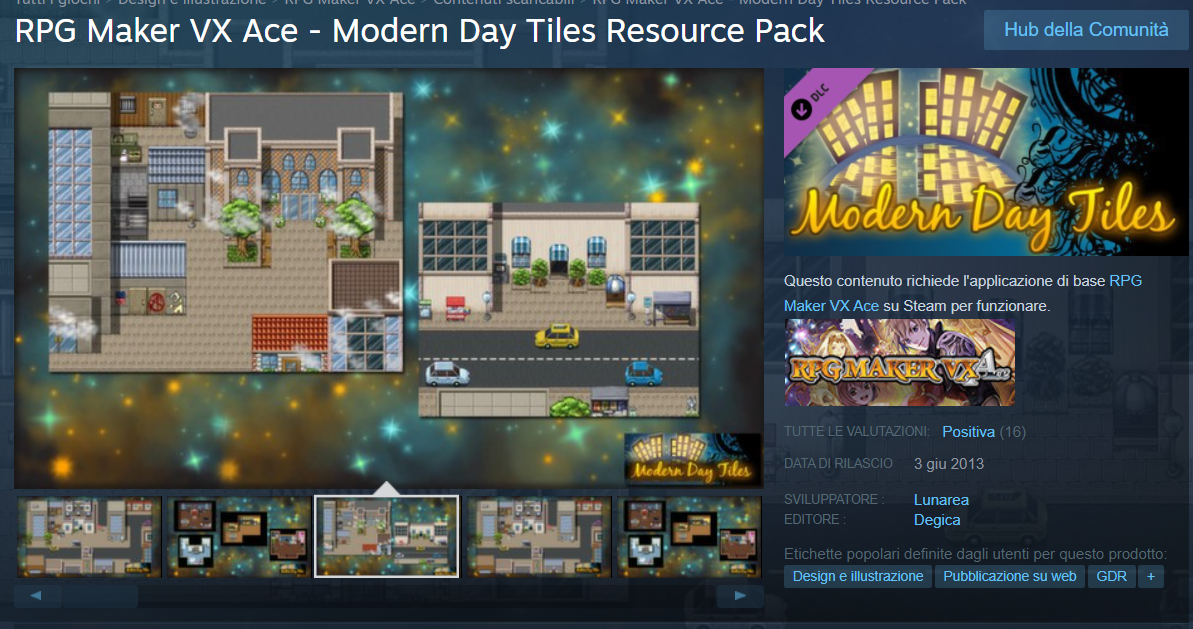
And if we also see in the game files, 90% of the game tilesets are all DLC released by Degica.

“tilesets” folder of chapter 1 of the game.
(4 墓 場 It seems to mean “4 Cemetery”)
My theory gets stronger and stronger when we see what types of tilesets are currently being designed by Sanada or someone in the game’s development team in general.


These only have Japanese names.
Quite out of style, compared to the detailed tilesets we see for all game maps, right?
So we can say that, for a good 90% of the game Sanada religiously used ONLY material that Enterbrain / Kadokawa paid for from a tileset point of view…

(Joel Steudler is one of the composers I can recognize that he worked on the BGM pack distributed by Degica)

And some of the music also seems to come from dear Aunt Degica.
Are you having any doubts?
Well, these can be confirmed by the Mogeko Castle case.


For me this title, with a few tweaks, could have outclassed Angels Of Death without any problems.
The graphics in general are really beautiful, accurate and above all stylish and captivating, from the drawings (from the CG, very professional in terms of design, to the immediately recognizable potrait style) to the tilesets and sprites made entirely from scratch in pixel art; the plot is adventure with a lot of action, is based on a storied structure and has many different registers (as we have seen in the article on this title always in Back To The Future) and above all different characters, strange, never boring and ambiguous exactly like Angels Of Death (if not better, I consider Moge-Ko much better written than Cathy) and also has a whole world and society to explore with sequels and prequels – highly anticipated by fans of the game is Mogeko Castle Gaiden!

…But the Funamusea games, unfortunately, only have merchandise and manga made by the game’s author.
I mean, it’s a good thing, it’s not a bad thing if people buy them … But in my opinion this creator hasn’t achieved all the success she deserved.
Yet the game is done with RPG Maker VX ACE. We are not talking about Mad Father (done with Wolf RPG Editor). It would have been perfect for advertising…
But no, Funamusea was able to create all the resources of the game on her own and Degica did not see it as a good chance to make it a phenomenon as those thugs like Buriki Clock (in Japan) and Sanada.
And do you know why?
It is because Sanada and Buriki Clock have used the engine “as they should have done” , as it has always been expected by those who created RPG Maker: do something creative … But with the packages given by the reference companies .


Just as they desperately tried to do in 2007 with far more clumsiness and far fewer artists.
So, given that it was realized that in 2007 this thing brought the tool to ruin, they took advantage of the fact that the Horror RPGs had partially saved RPG Maker from total mockery (which it still suffers today …) by users of other engines and it was decided to reward those who, in Japanese soil of course, were able to use the resources given by the program itself or by Degica via DLC to do something that at least resembled a nice narrative RPG in the least (but really minimally, considering the case of Cloé’s Requiem…) marketable , to show the world that “we can all be artists” with THEIR engine.


I have already stated this. I don’t know anything about the internal dynamics of supporting certain types of projects . So I don’t know exactly what happened to reveal Angels Of Death and … Cloé’s Requiem, compared to Mogeko Castle.
But it seems to me that they wanted to show us that 60 euros (and more, including DLCs!) were worth spending on their product…
Because it gave us the possibility to be the new viral phenomenons , even if we don’t have the means and / or the skills to create what is becoming one of the most powerful modern storytelling mediums of recent years.

And here we go to the title of the article, which is directly linked to why the Thermometer of Professionalism is now destroyed.
Let’s compare the two thermometers of Cloé’s Requiem and Mogeko Castle.
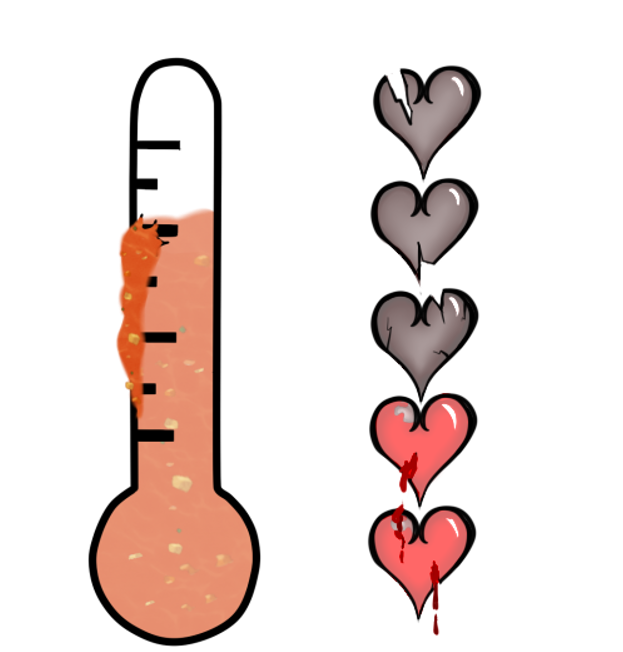
Apart from the fact that one is drawn better, one is drawn worse …
With these judgments it could be predicted that Mogeko Castle would do much more success , at least in Japan. It could be expected that some publishers would consider it, at least to put it on Steam.
Instead…

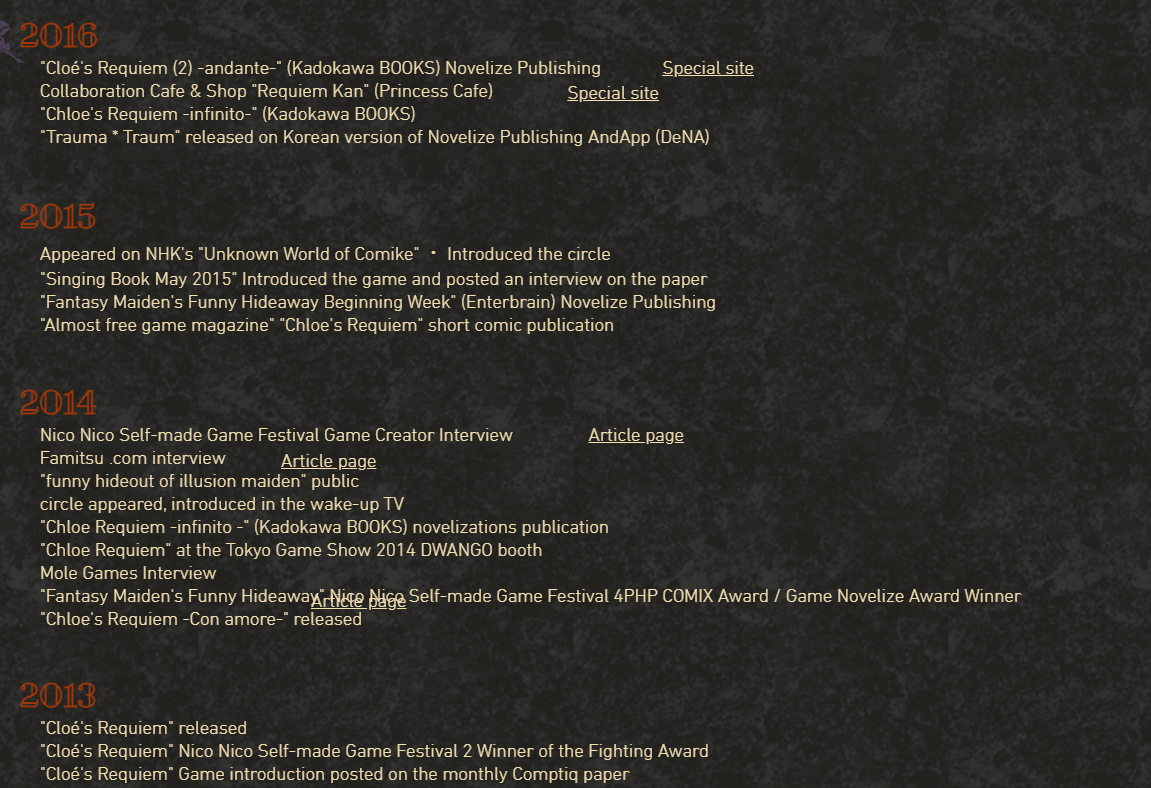


And, in the case analyzed today…




Here we are not talking about cases like Pocket Mirror, where there is a sensible reasoning why it should be highly marketable, where (even if not in the narrative) there has been a great effort in the development of the game to make it as palatable as possible. to an audience.
Here we are talking about titles that get the maximum result from what is considered the least effort , compared to types of authors like Astralshift, Funamusea and … Yes, it burns me to say even this name but I have to say it for strength, even teams like Omocat’s in the development of OMORI.
Again for our own motivation, namely that we do not know the precise dynamics that exist in these huge rounds of money and contacts, we do not know how common this phenomenon is in Japan or on the part of KADOKAWA (and / or collaborators) in general . We don’t know exactly how many games in Japan have been treated with this method , so we don’t even know how much it is used compared to other marketing ploys that a corporation as big as KADOKAWA can afford. So we can say that we don’t speak as professionals or totally knowledgeable on this matter…
But I can tell you that even from our eyes, those of simple gamers … Which eventually became the same kind of developer that Funamusea was … (Not in terms of quality, we would never allow ourselves to tell us ourselves, but from the point of view of how customized the game’s assets are, so a purely technical factor)
We are honestly afraid.

Literally an expanse of black wood, with a bookcase and two chairs right in the corner. In general a very empty map, with tilesets that I recognize for a mile (they come from the first RTPs of RPG Maker VX or VX ACE), covered only by the two potrait and the dialog box.

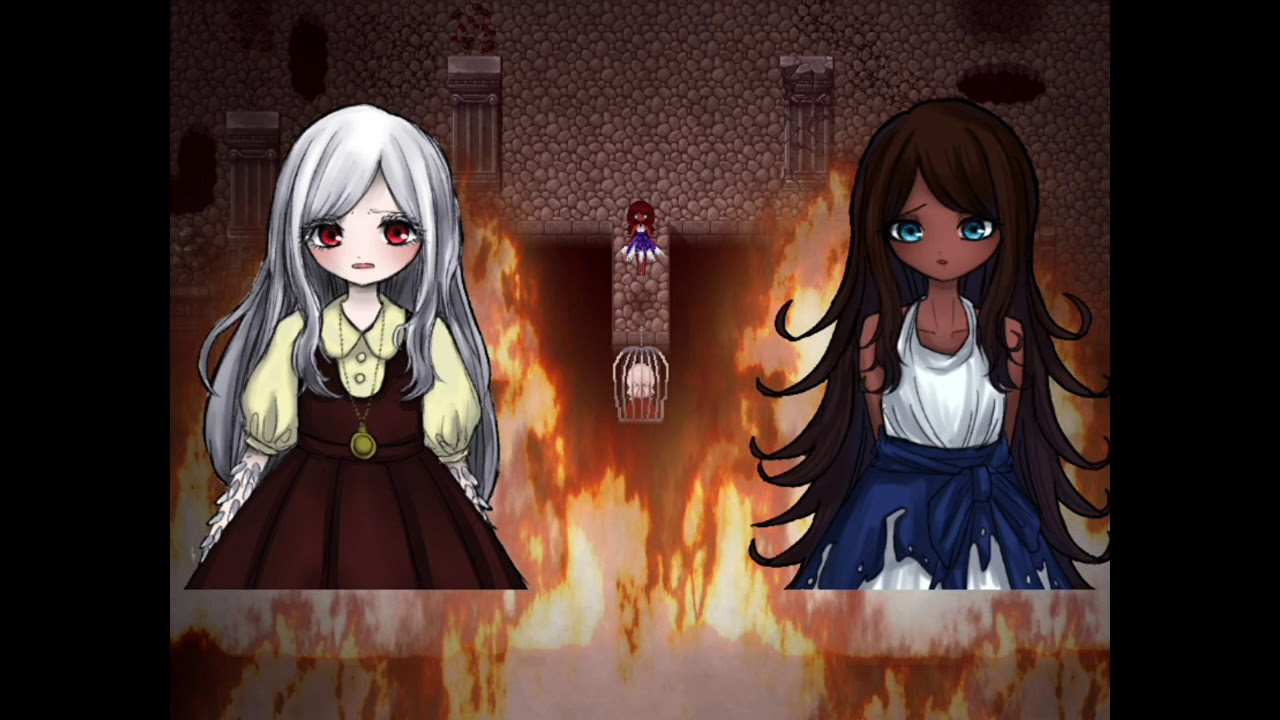
Do I really need to comment? Here, too, an empty map, one-color and one-theme, columns just to frame the mess of stone we are seeing, in the scene a fire that has the same quality of in the same quality of the explosions of the first seasons of South Park, potraits that are CUT and have empty space beneath them, tilesets that are totally out of style compared to the sprites and in general I don’t understand where the hell the scene takes place.
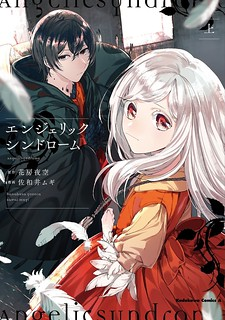

The effect of the sun practically makes the whole scene and gives it a bit of atmosphere along with the photograph. Here, too, the sprites and potrait deserved totally different maps, but with tilesets (although I don’t quite understand where they come from, unfortunately) they REALLY went on a budget and without even doing a certain type of work with goddamn proportions: the lamps are tiny compared to the sprites, as are the machines, the tree and the large building on the left. Kanawo, you didn’t make such bad maps for Blank Dream!


And for a moment I look out too, PaoGun, to point out something to you.
It is almost ironic to think that many authors boast that they “exceed the limits of RPG Maker”, “offer beyond what are the possibilities of the engine” (if you want to laugh, such a concept is also told in the Sanada interview we mentioned), and other similar phrases when it was probably all meant to be so from the beginning . Now, going beyond the split between our hypotheses and reality, I want to launch this provocation and let the imagination flow…
Let’s imagine these producers are telling us, “Yes, yes, we are wrong! You can remedy this if you test us, experience how good you can be!” using what may have been a bad reputation to turn the omelette and make it your own marketing strategy regardless of how bad a title may be or not. Who cares, in the end audience expectations for a quality work are lowered! The important thing is to pamper your consumers well and spoil them.
So now I talk to you authors, yes yes, to all those who continue to think they can be the new “great creatives” of the century showing themselves as the heroes who revolutionized the engine: the Enterbrain, Degica and Kadokawa totally hosed you. They hosed all of us.
Conclusion
(This time forever, or maybe not?)
And with that, our journey ends.
And it is precisely in these circumstances, in the last article of Back to The Future, that we realized that we have not actually concluded anything relevant, if not to open even bigger doors. Probably with all our instigations at this time we are making your hands itch, perhaps because you would like the topic to be gutted properly, deepened, and not left to mere spectacle as we did in this article.
We reveal a small confession: in the future, our great desire would be to create a nice article-investigation on this topic.
But they are those projects that take time, it takes data, it takes resources. We don’t know if we will ever be able to achieve something like this, but it would be what we feel we need to achieve. But not getting lost in small talk, perhaps you might have asked yourself this question if you have followed us since the introduction of Back To The Future:
But in short, has a market been consolidated or not?
Well, how do we define it … Indie game market? Market of the current Horror RPG? Indie fiction market ..?
Well, what do you think? We have shown it to you all this time, we have described it in the articles of this column …
The answer is yes.
It was not even born and has already developed over the years many facets and all very complex. Can we say that there is still the possibility of being able to live of this, that is by being a developer without having special programming knowledge? The facts would tell you no, or that the odds today are slimmer than in the past and that the only cases in which it seems that a road has been opened to build a relevant business (and from which significant sources of revenue can be expected just that) were the Corpse Party case in ’96 and the Anges of Death case , almost absurdly exactly 20 years later, in 2016 .
I would like to insist on one thing, it just amazes me that such a phenomenon has been created .
We live in an age in which linear paths are visibly flaking off , I have mentioned this topic several times in some articles and especially in the one on Astralshift and Pocket Mirror. Many times you may have heard these words: “if you study this means that this will correspond to your profession”, in our case, “you become creative only for recommendations from the environment or you become a video game programmer only if you study that and we specialize “.
Now, whether we have criticized these authors or not doesn’t matter, because all the people we talked about in the Archives (and not just in Back to The Future) have built a product by becoming responsible for numerous areas of the creative sector to be able to publicly use it to other people . Some of these people have managed to obtain a more relevant result than you could have imagined, just try to scroll through the images of all the titles that have passed in front of us during these fifteen years and think about how this thing has become more and more obvious in our eyes over time.
Impressive, isn’t it?
Among all the insults we have launched at these titles and the people who made them, we are still talking about finished and finished works that have reached an audience, have generated fandoms, and these we have spoken of are only grains of rice respect to much bigger phenomena and in different fields.
We have complained many times about different things, but we still believe in the possibilities of being able to generate new drivers in this environment, in this so unusual market . And since this is the last article for the column and we’re feeling romantic, John Bon Jovi sang: “Shot through the heart, and you’re to blame. Darling, you give love a bad name “.
The authors of the past and the producers of the engine have formed on the one hand a dream, the one that every narrative work already offered by giving us experiences, then stories and characters with which we can escape from our daily life. Then this dream became bigger , deluding ourselves that we could become something in our turn , become famous by talking about us, our words and our ideas through their tools. They showed us something and made us believe in some possibility, we do not believe that this is impossible. What we have shown you during these articles I simply define it as a “bad name”, but the lyrics are clear: we always talk about love, as always about art we will talk about , who boast of its appearance more sophisticated or more exuberant for entertainment here we are referring to the art of communicating , a possibility that presents itself before our eyes at no cost (more or less) , in the round, being able to exploit all the possibilities that a creative videogame work can do.
For this, we tell anyone who wants to jump in and has been discouraged by what we have written, grab this wave and build your way because we are the first deluded to believe in these last possibilities and we could not forgive ourselves for having shot down someone’s hopes.
And with that, we turn off the engine and get out of the car. The lights go out.
Once again, thank you for spending your time with us.
-PaoGun & Ele, Ludi Tarantula Team


















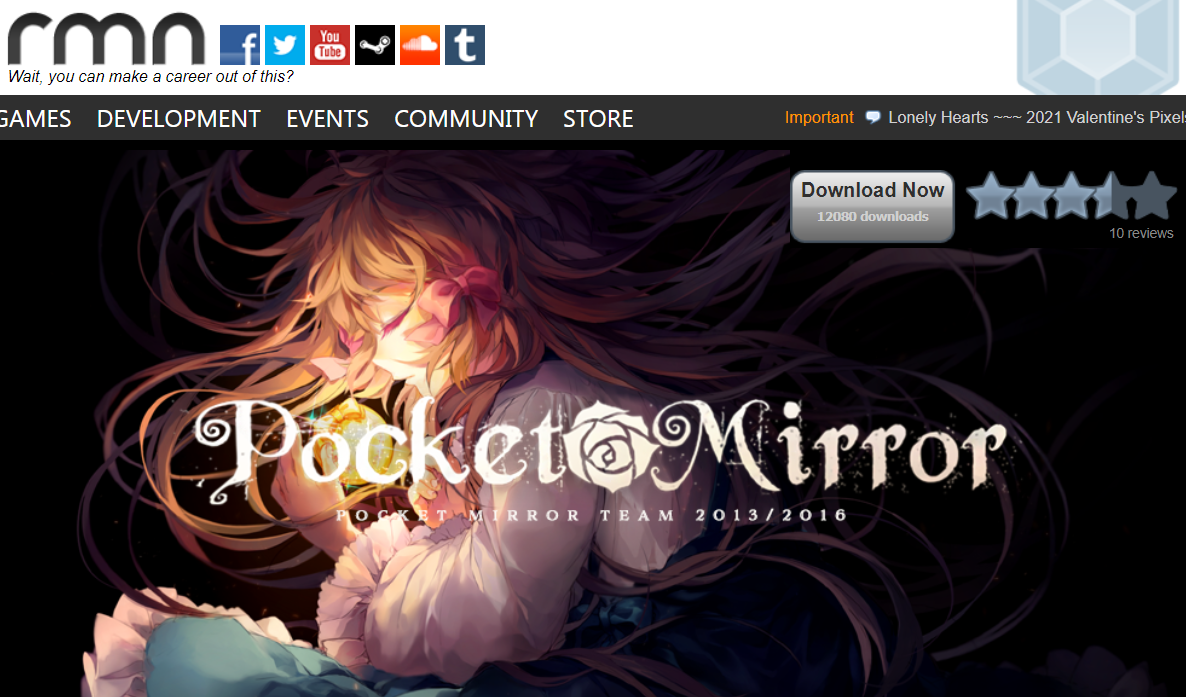







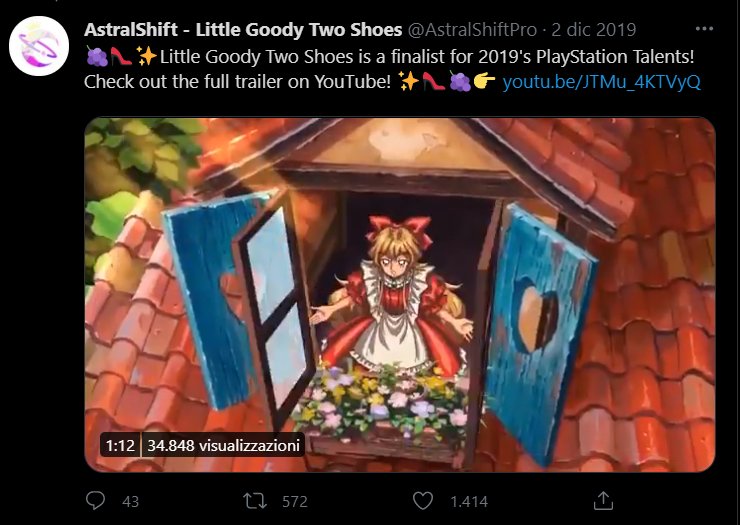
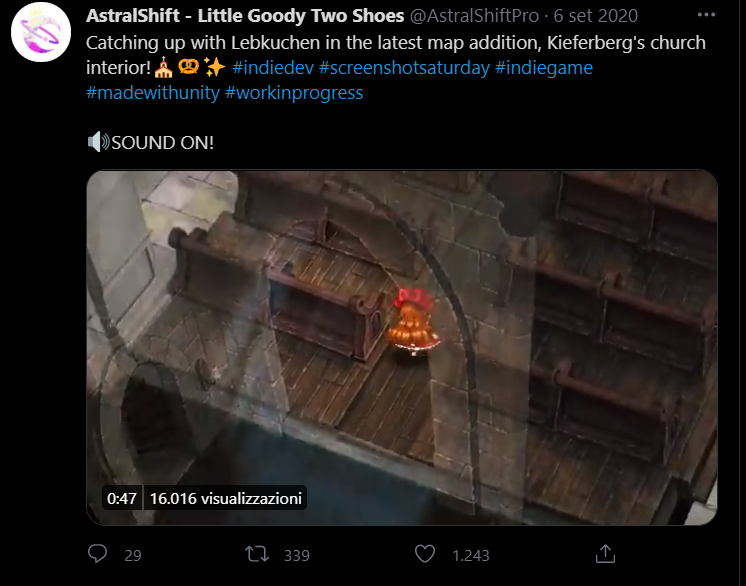





























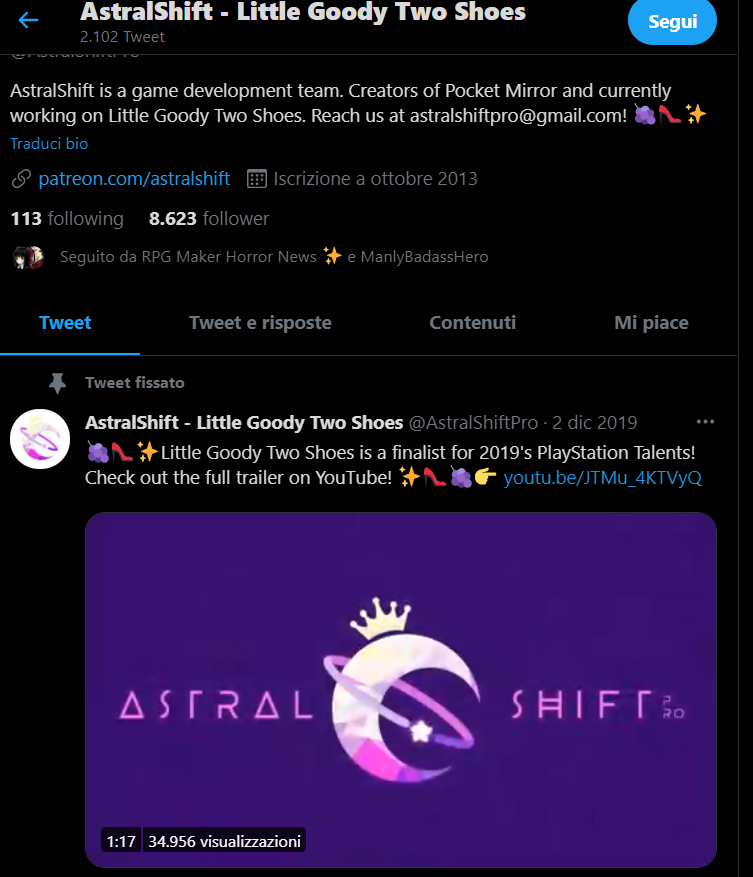


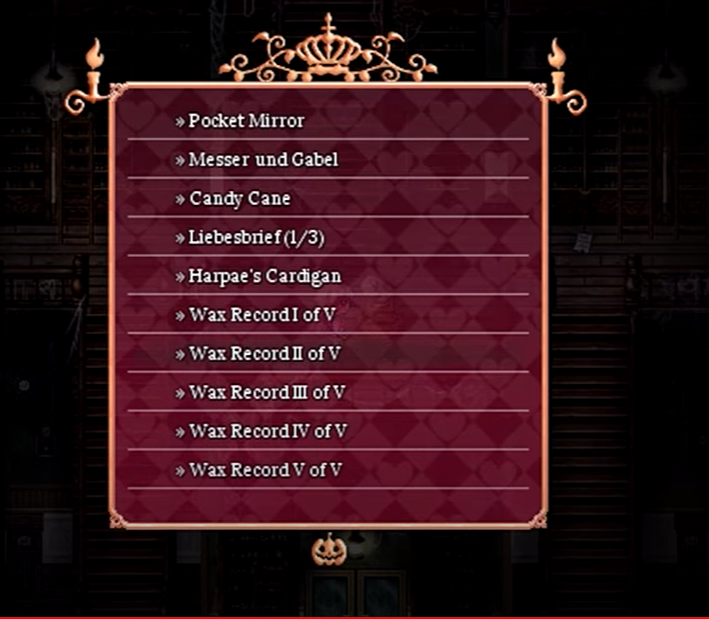
















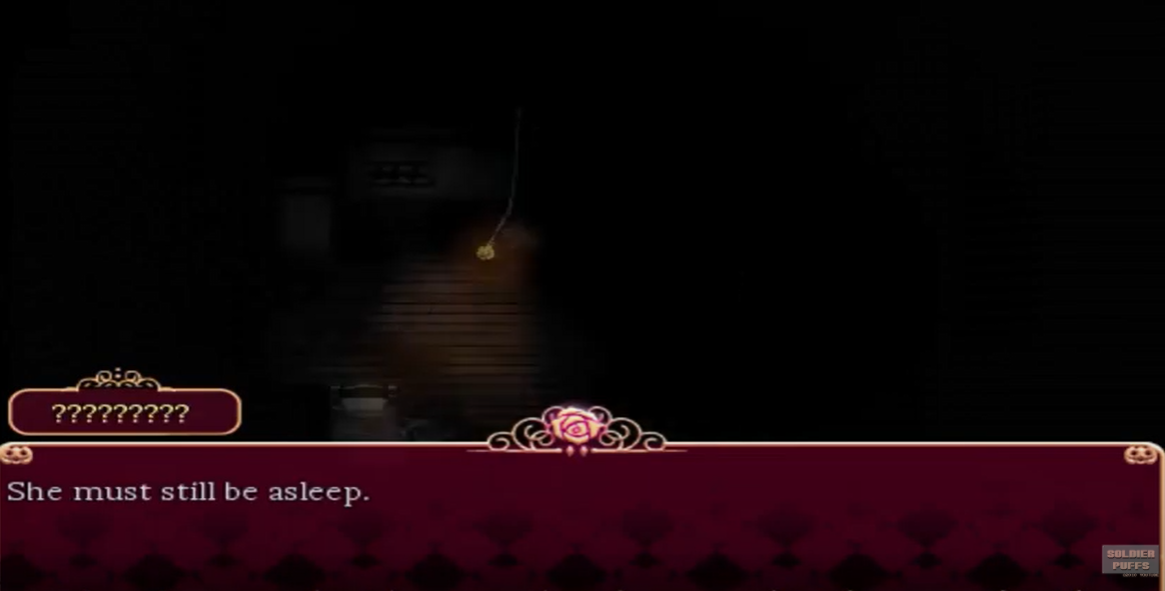

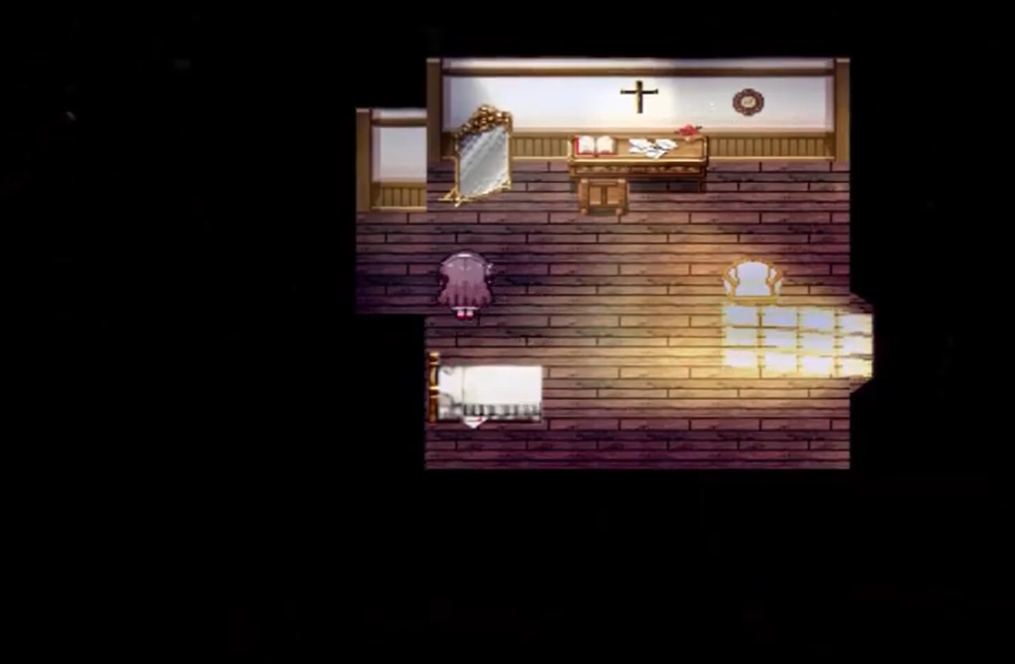























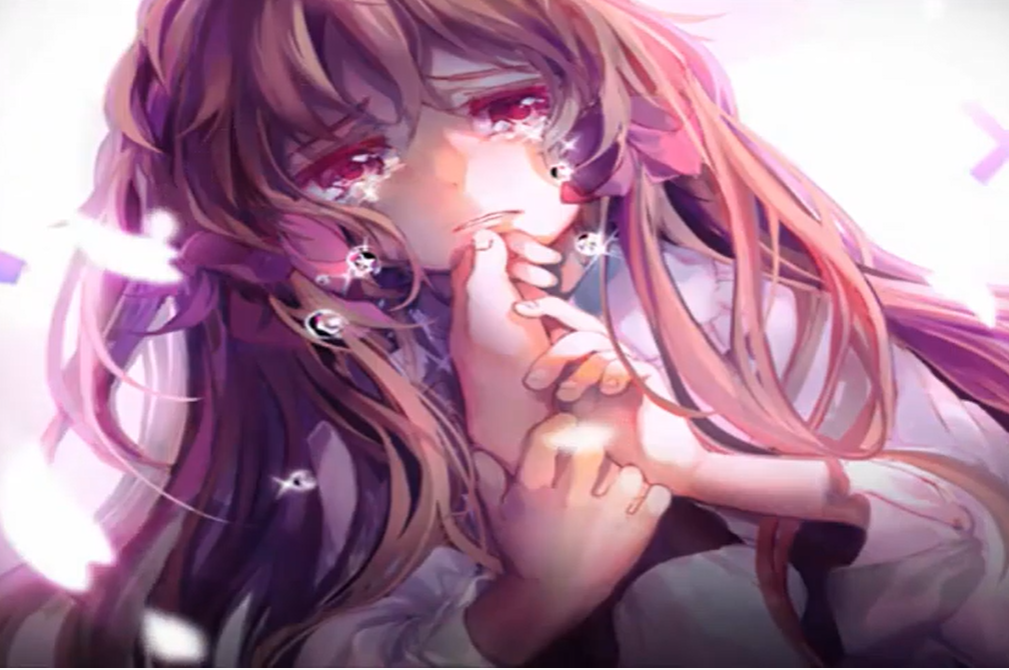




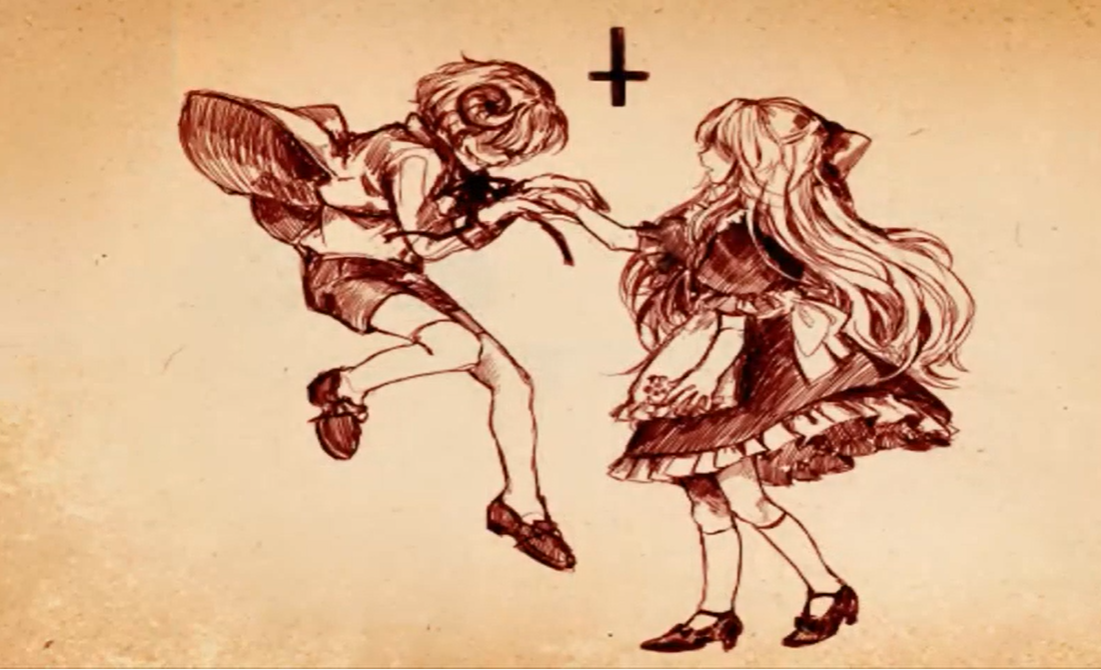










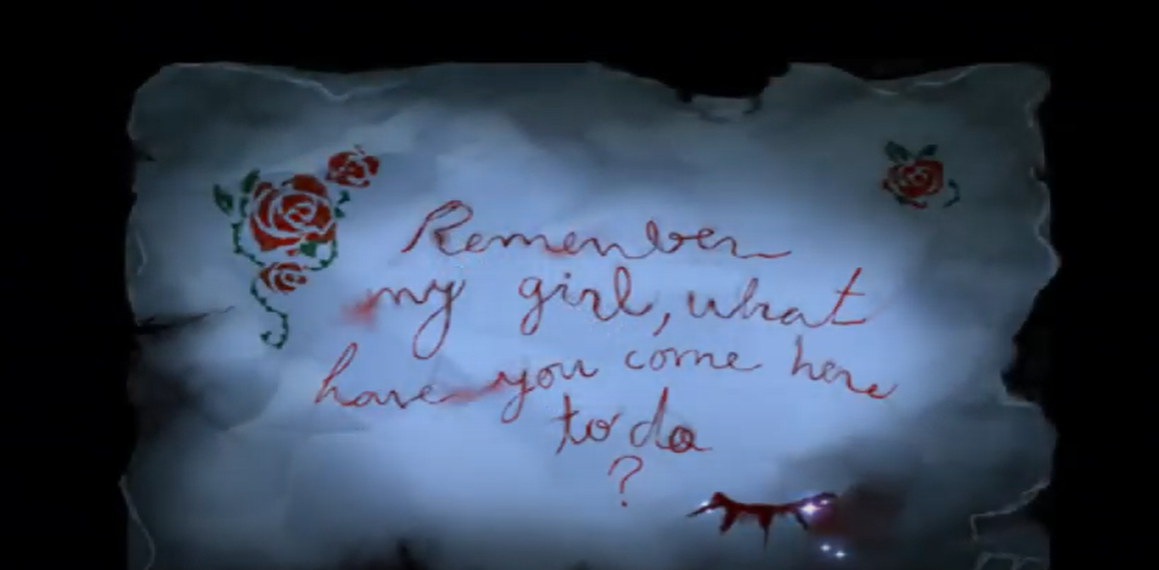





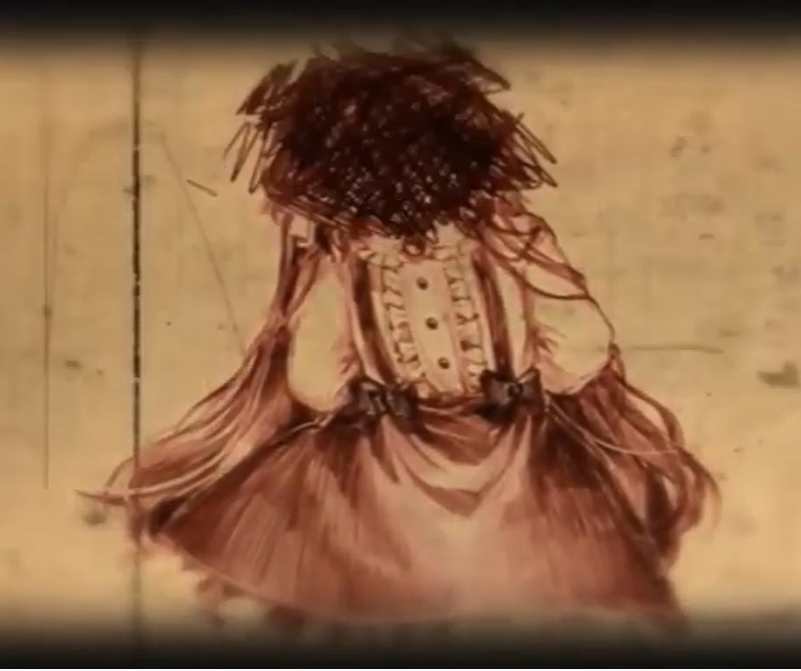


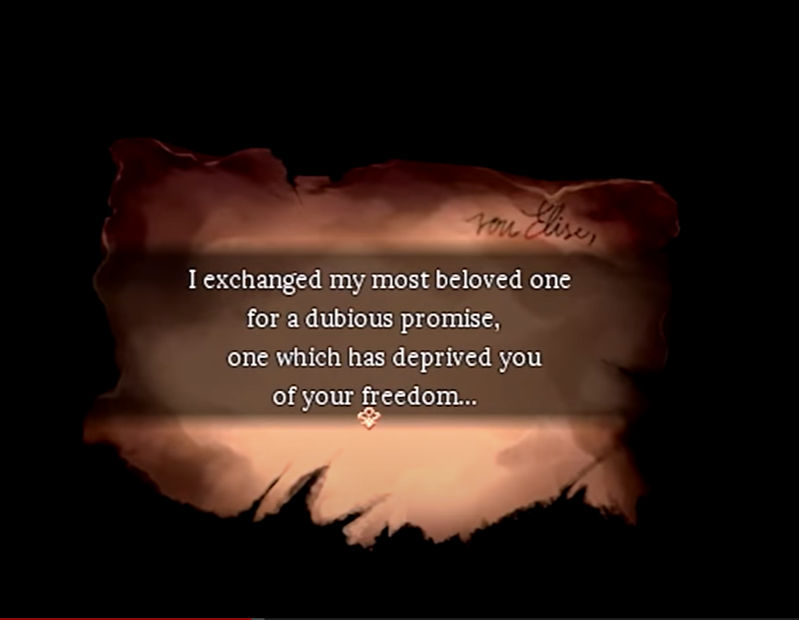














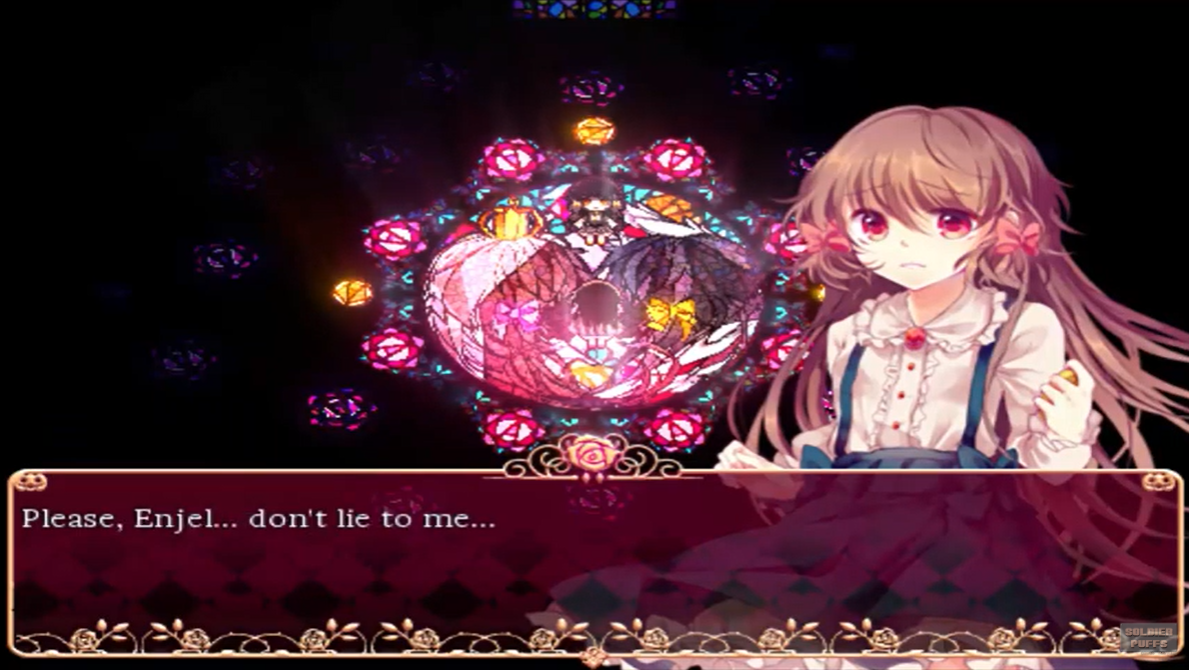


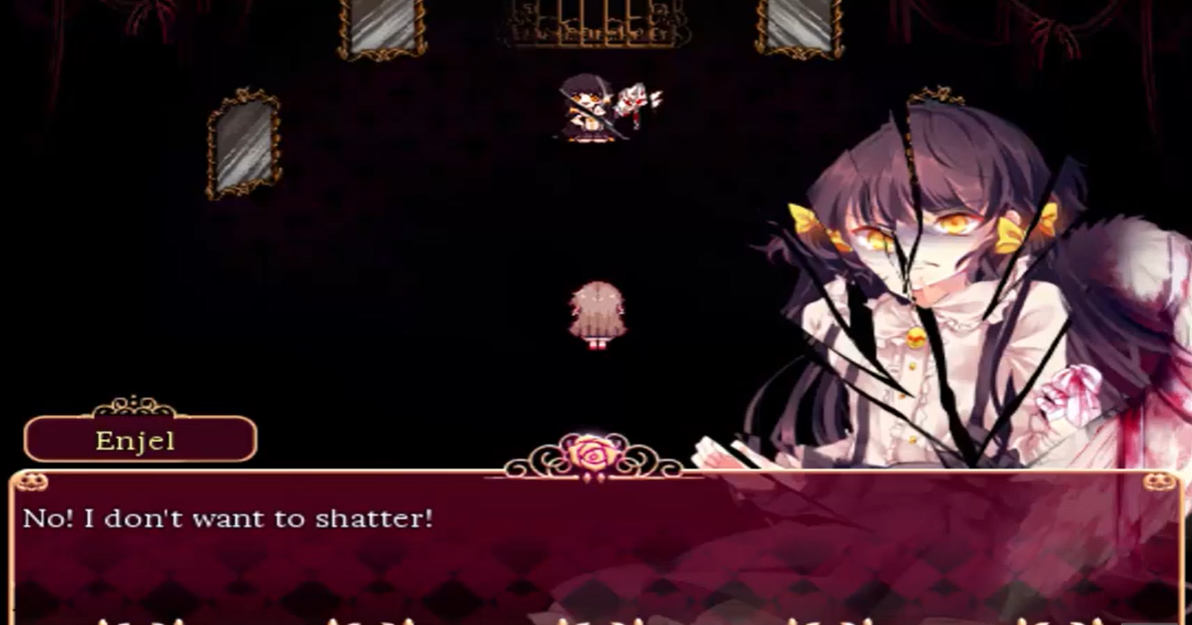





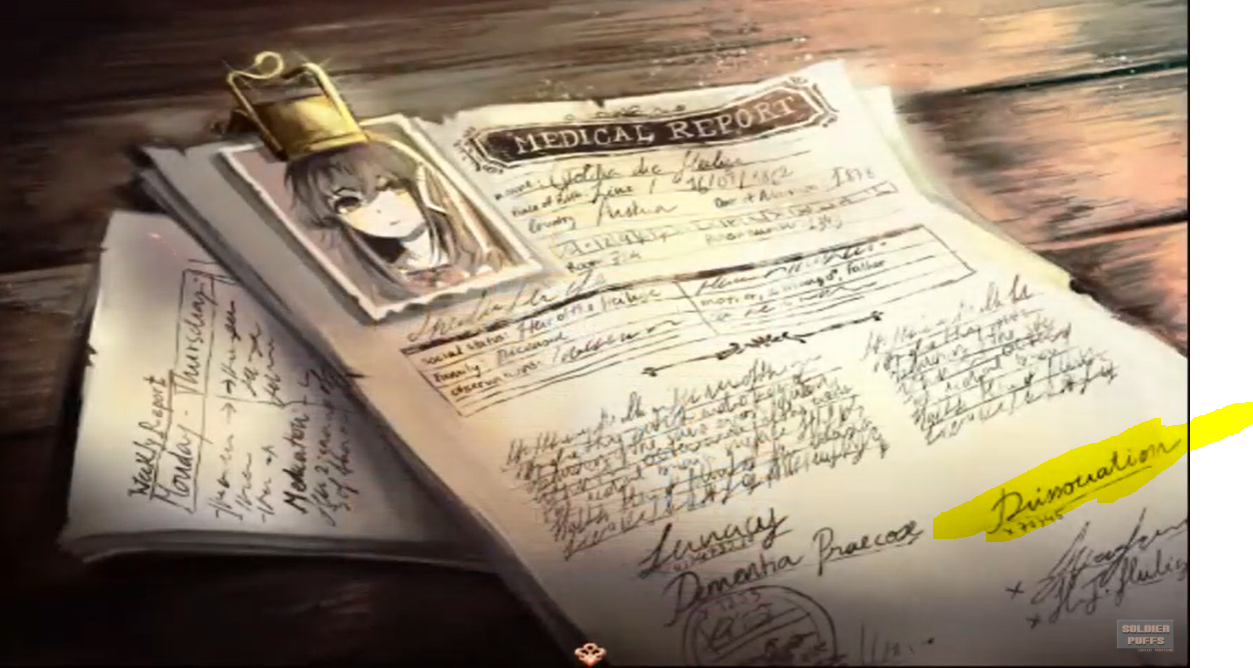








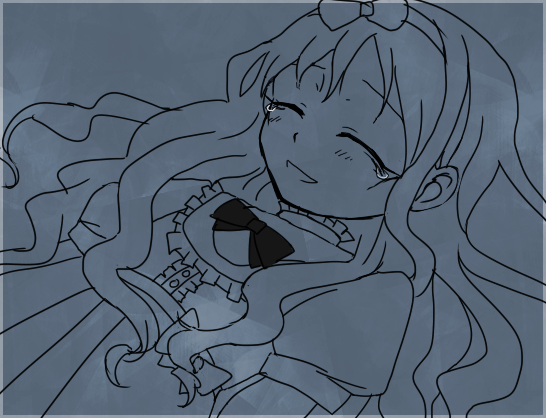







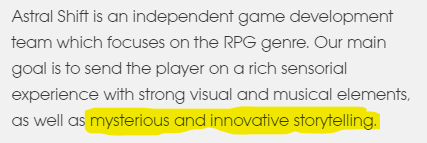





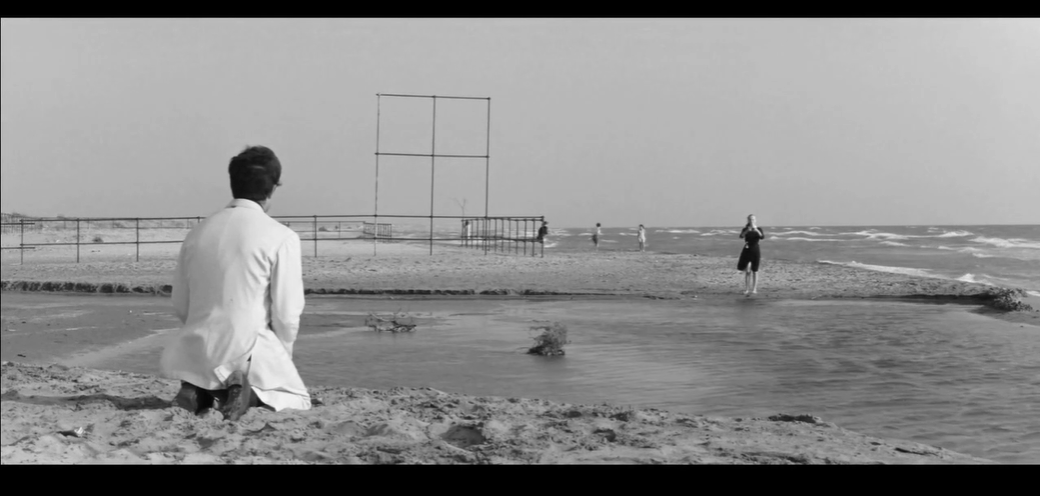













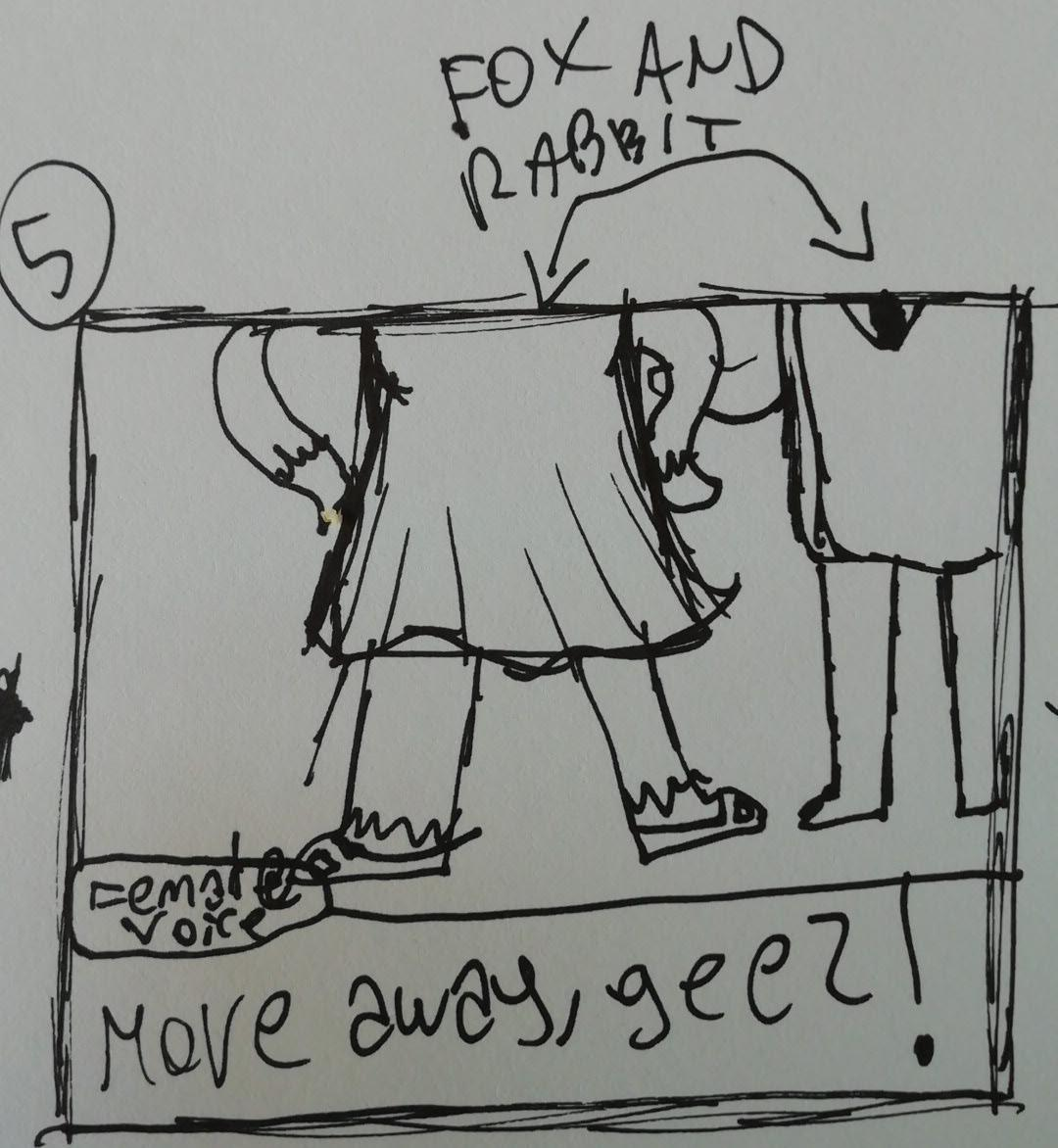















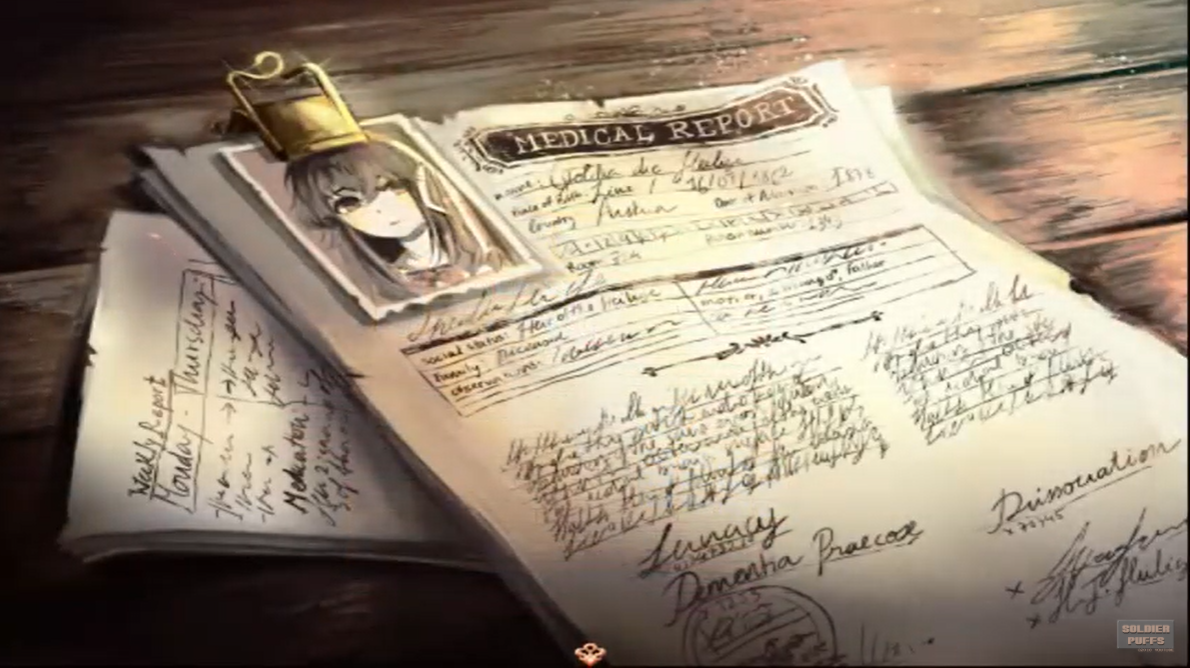




















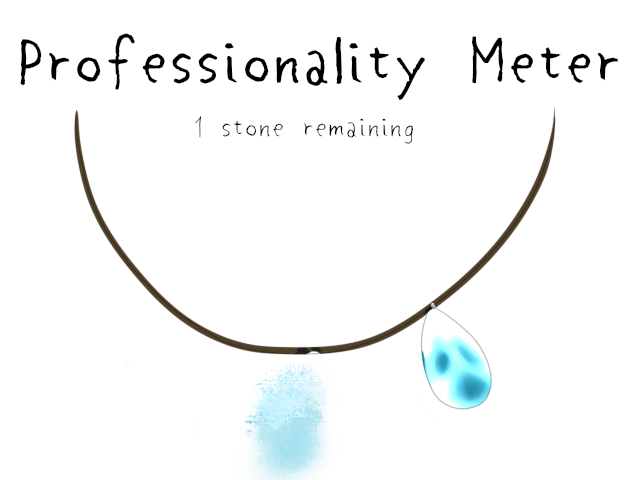

 For this time we neglect the title, it was certainly appreciated by many the idea of putting the items on a theme instead of the normal “start, continue and close”, yes. One of the few interesting things I would notice is how the game title is highlighted.
For this time we neglect the title, it was certainly appreciated by many the idea of putting the items on a theme instead of the normal “start, continue and close”, yes. One of the few interesting things I would notice is how the game title is highlighted. 


